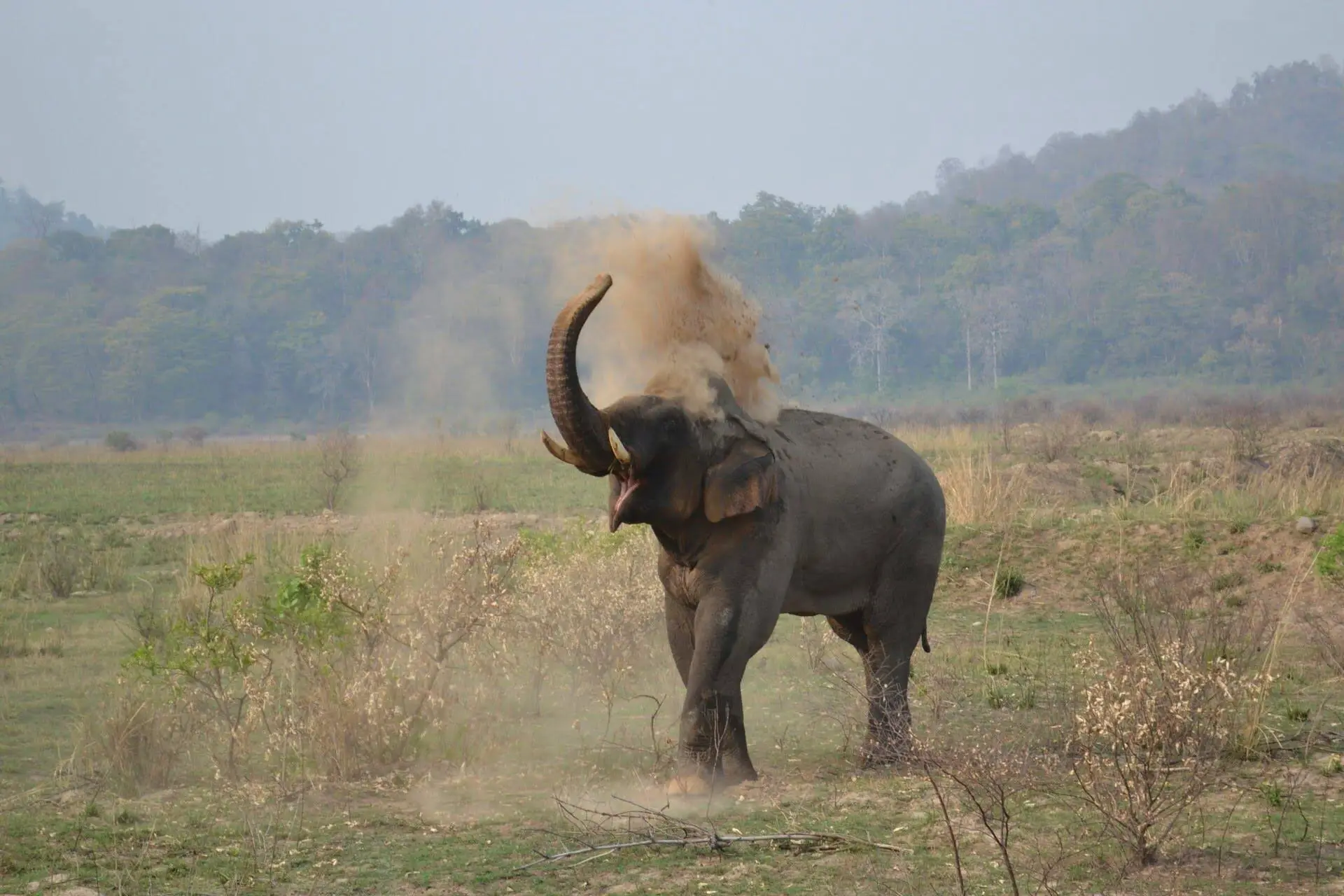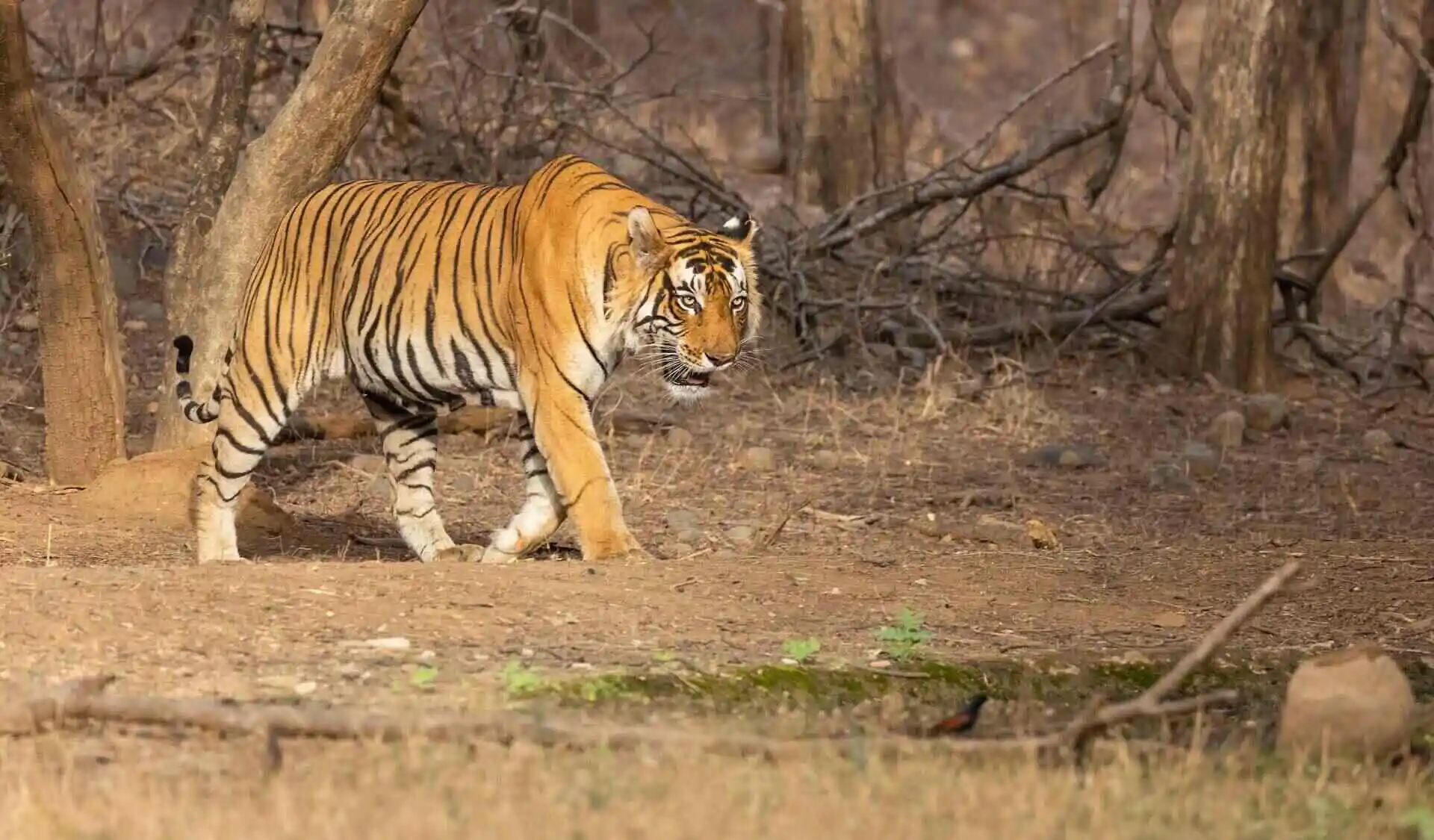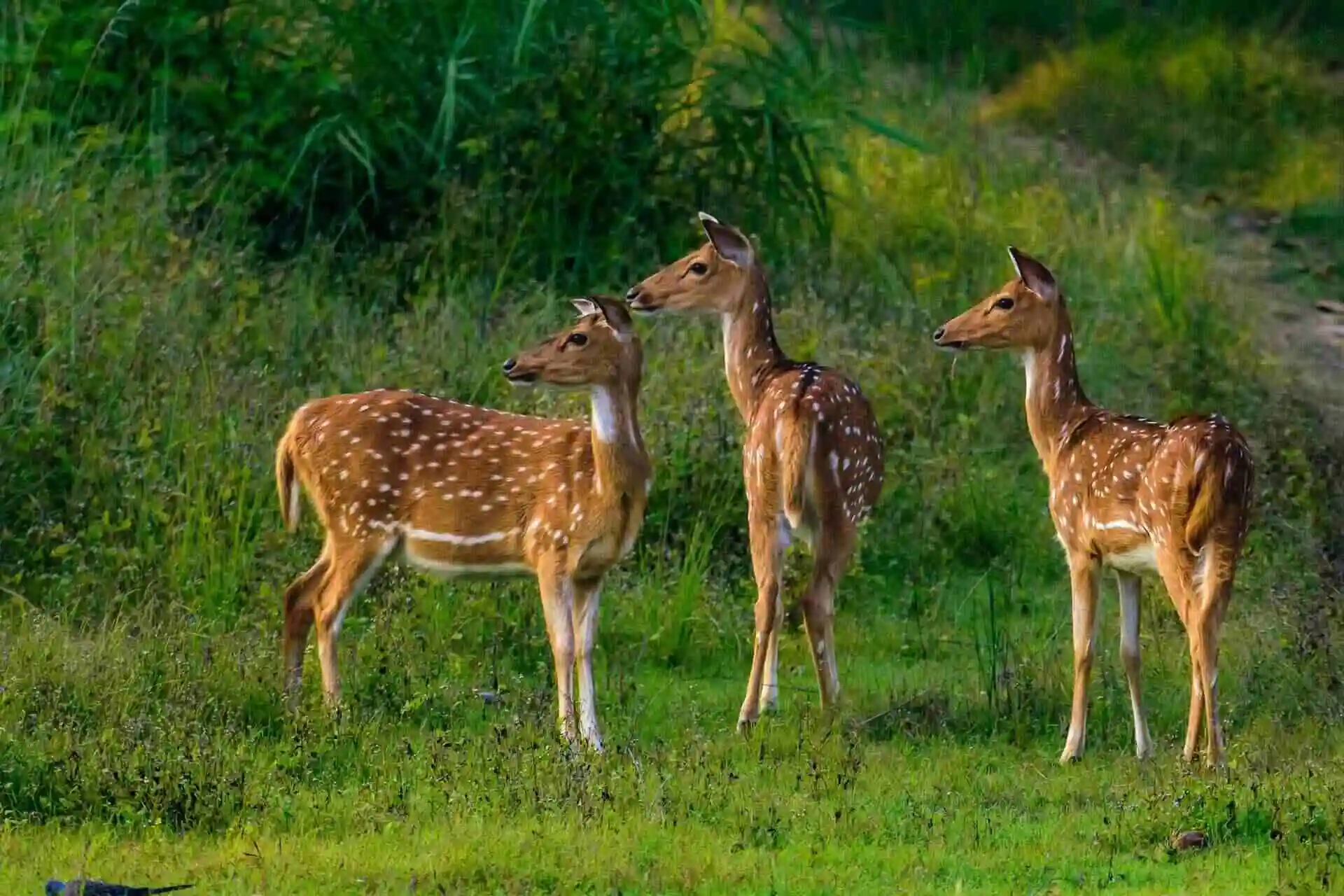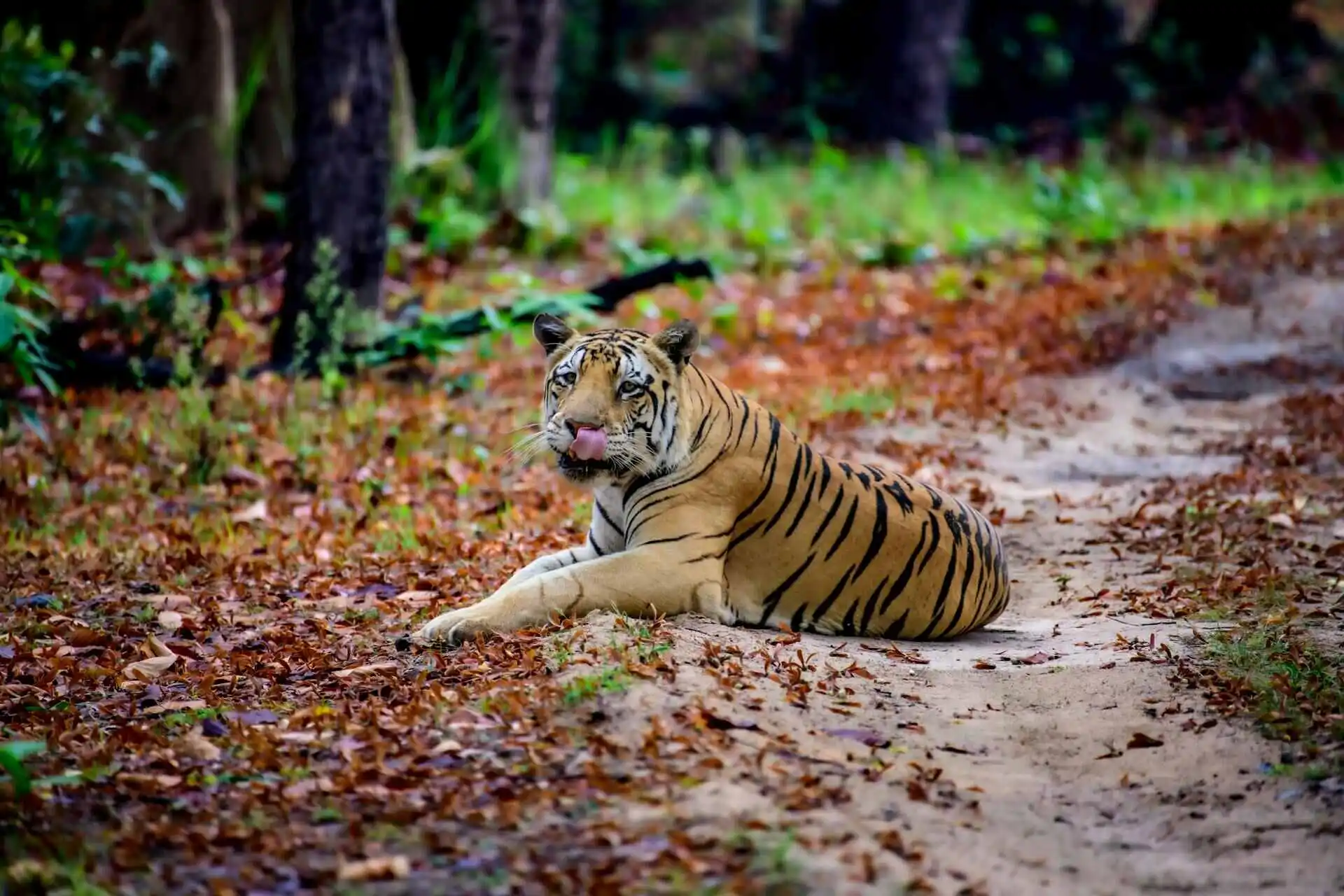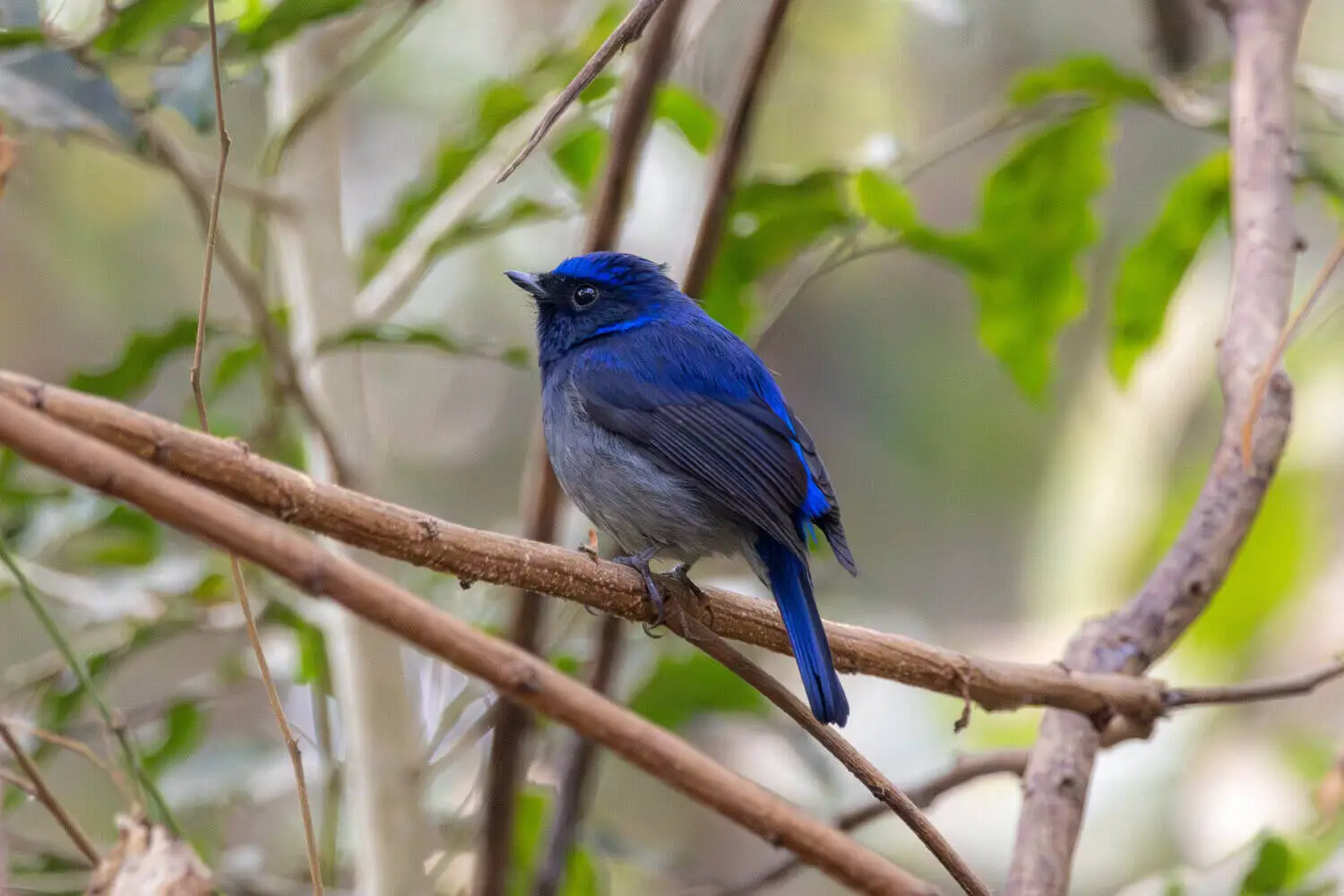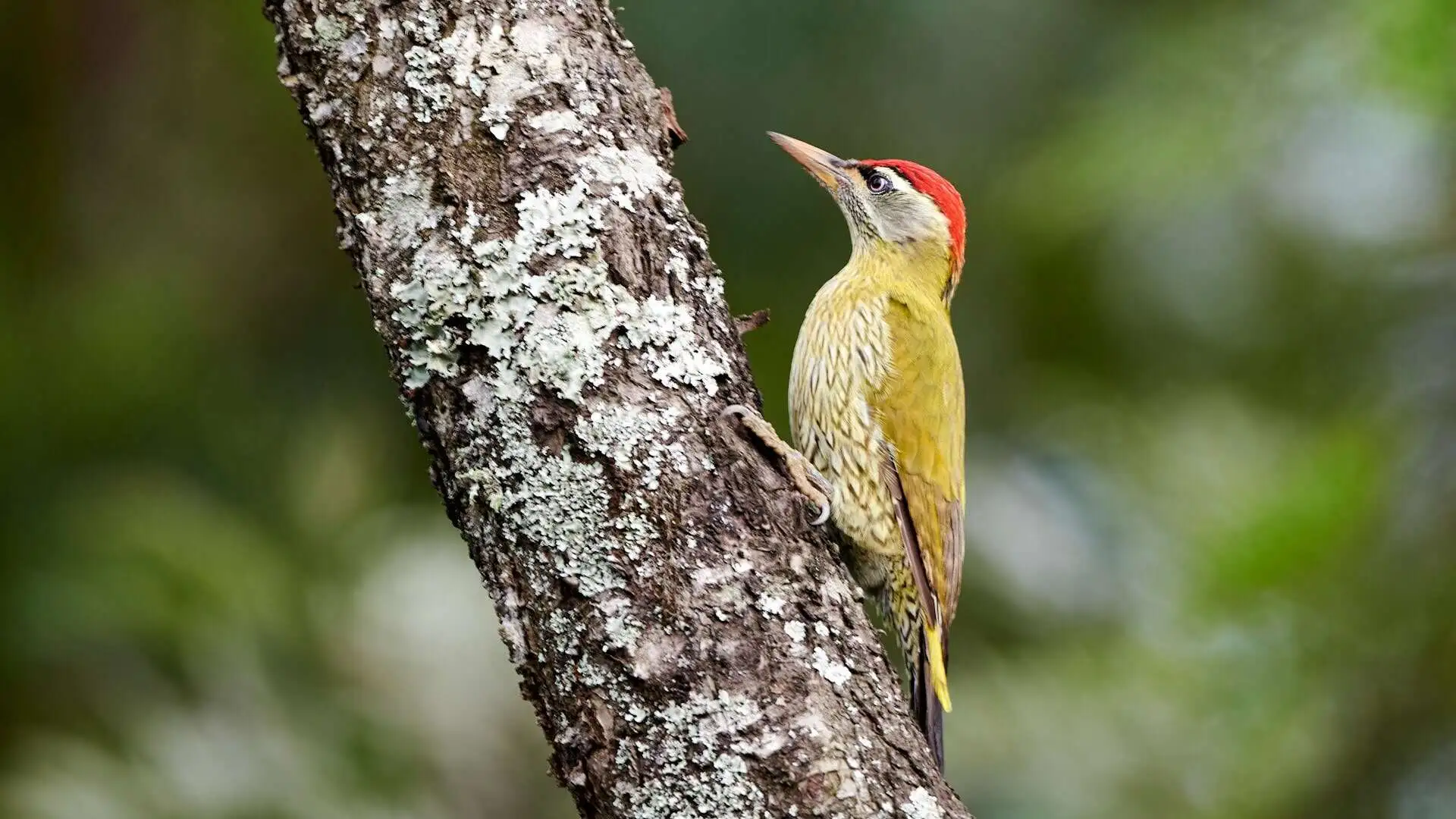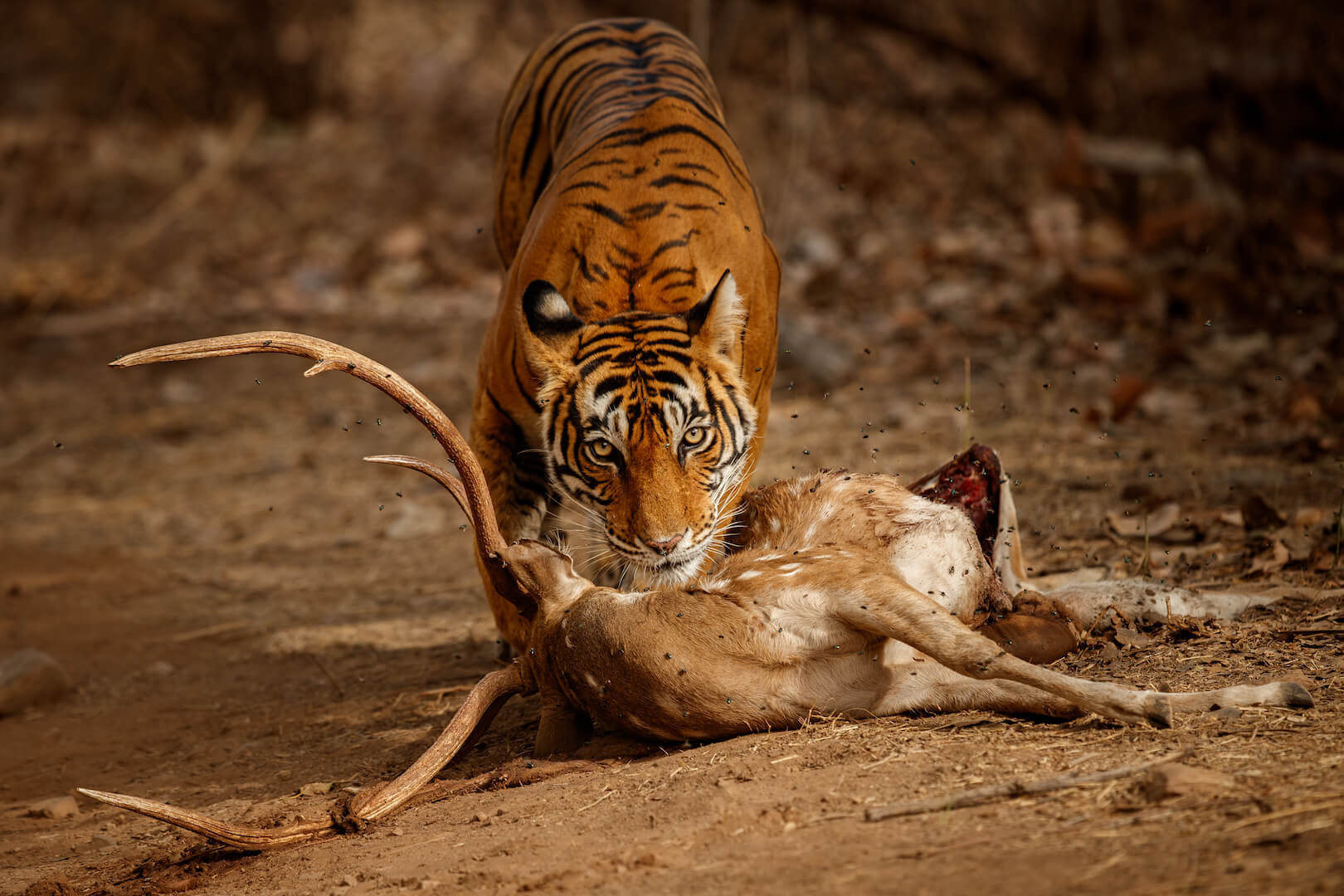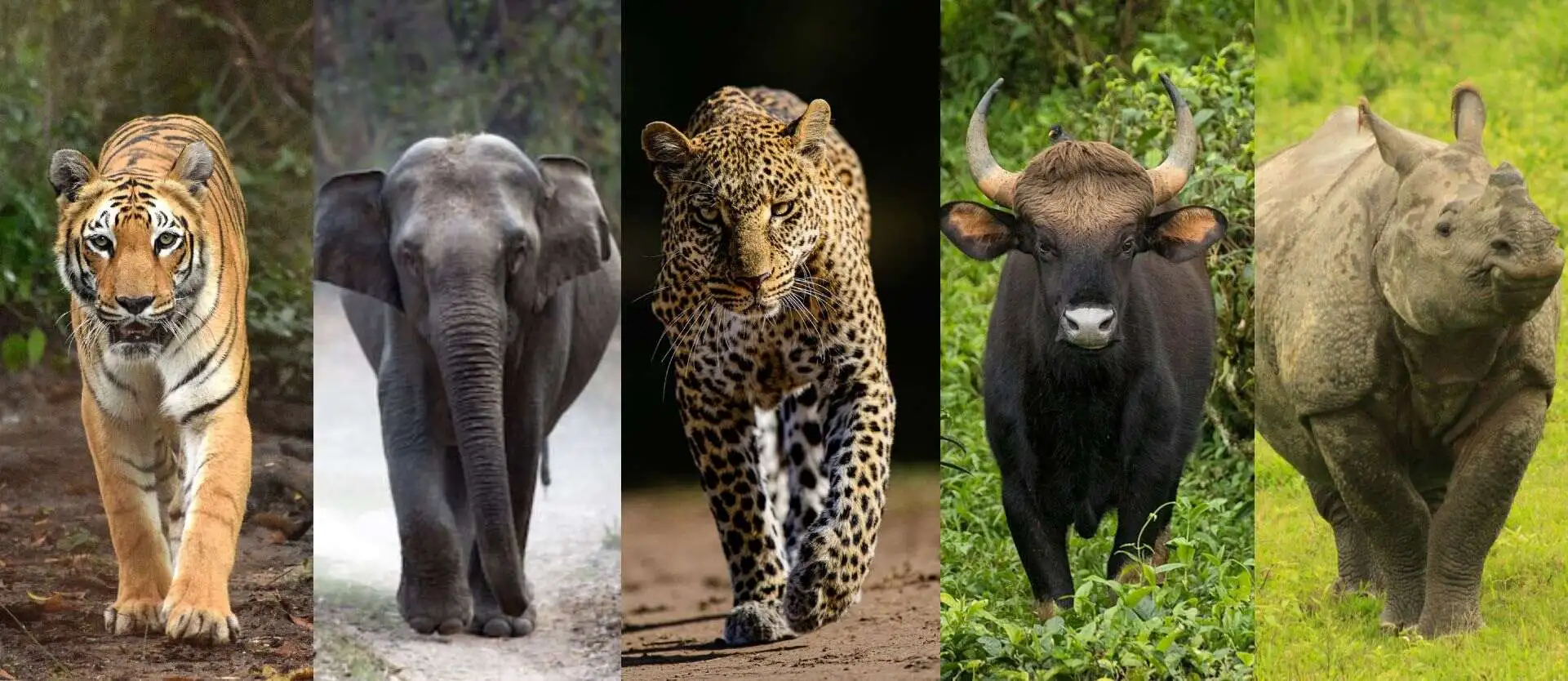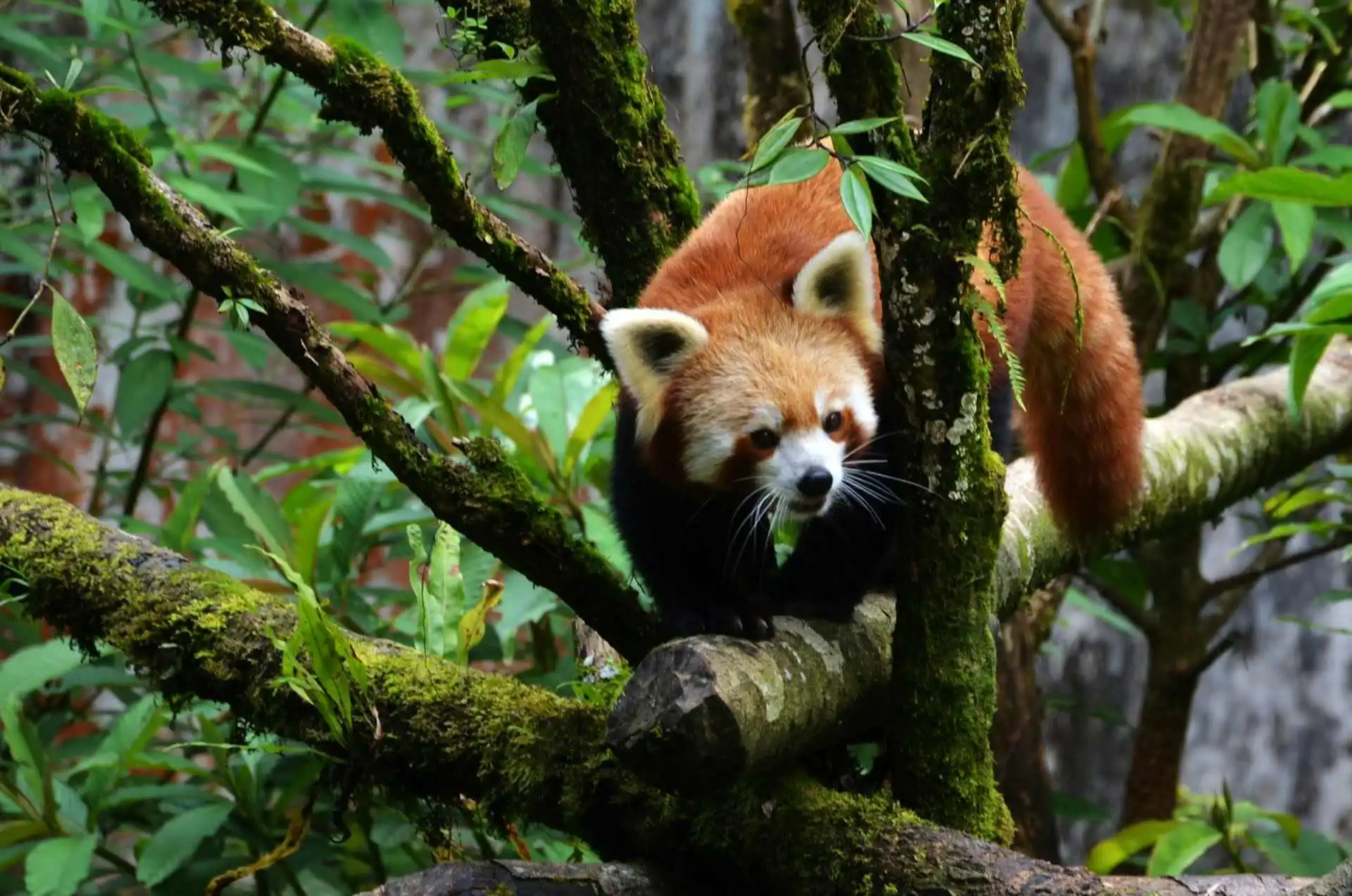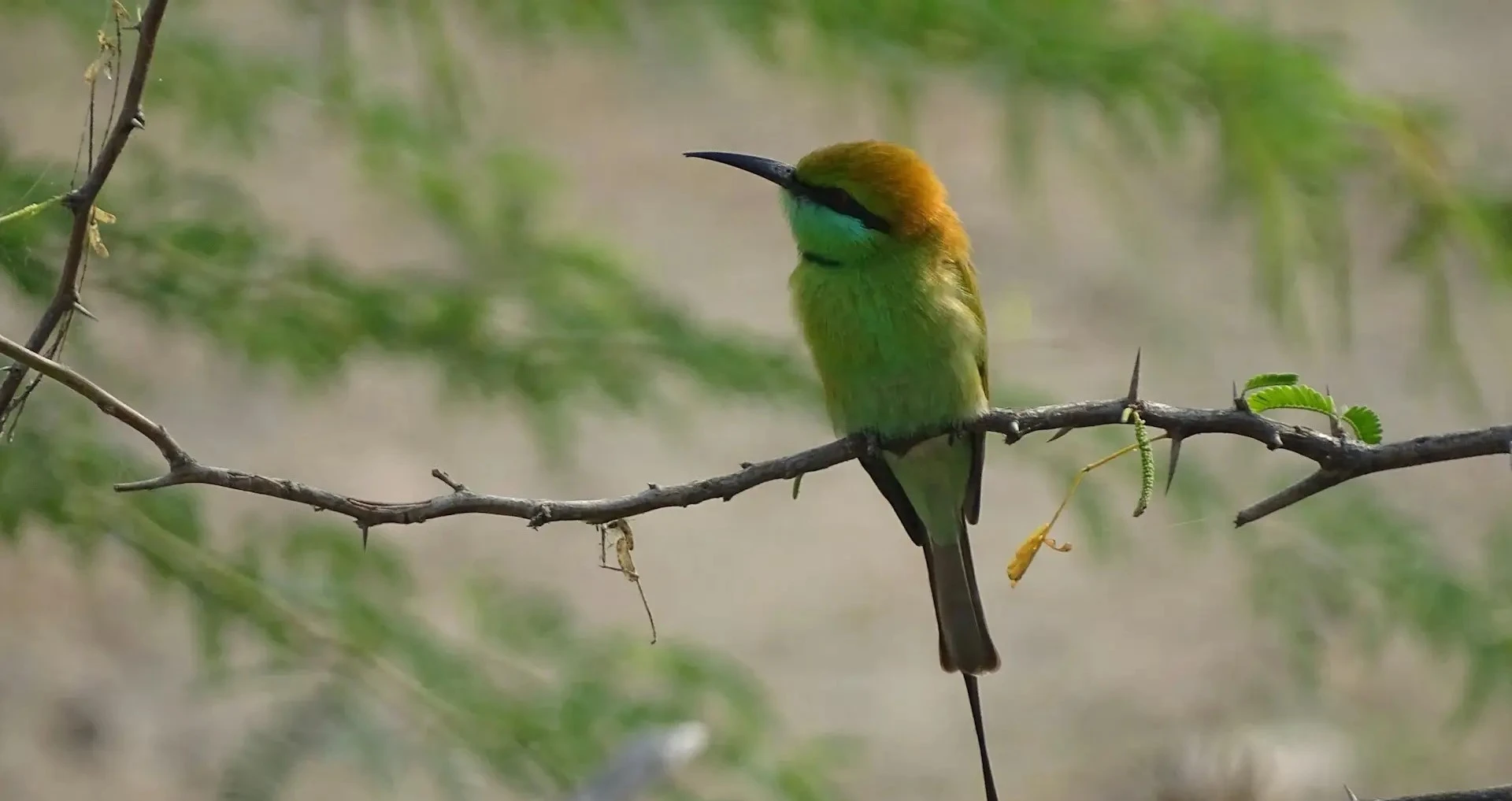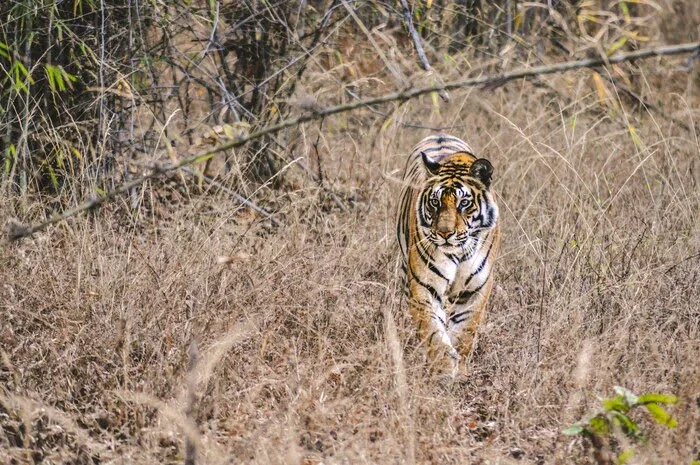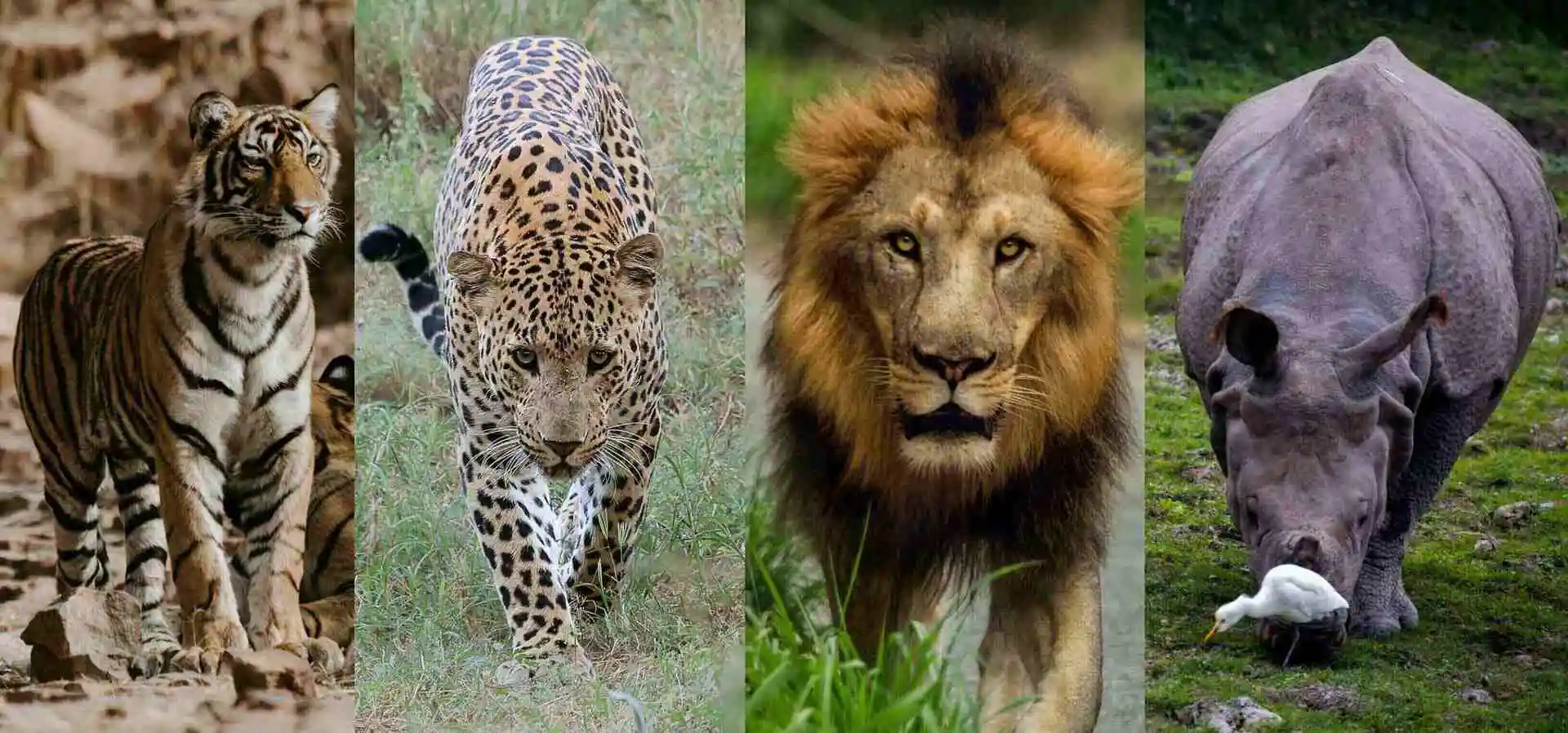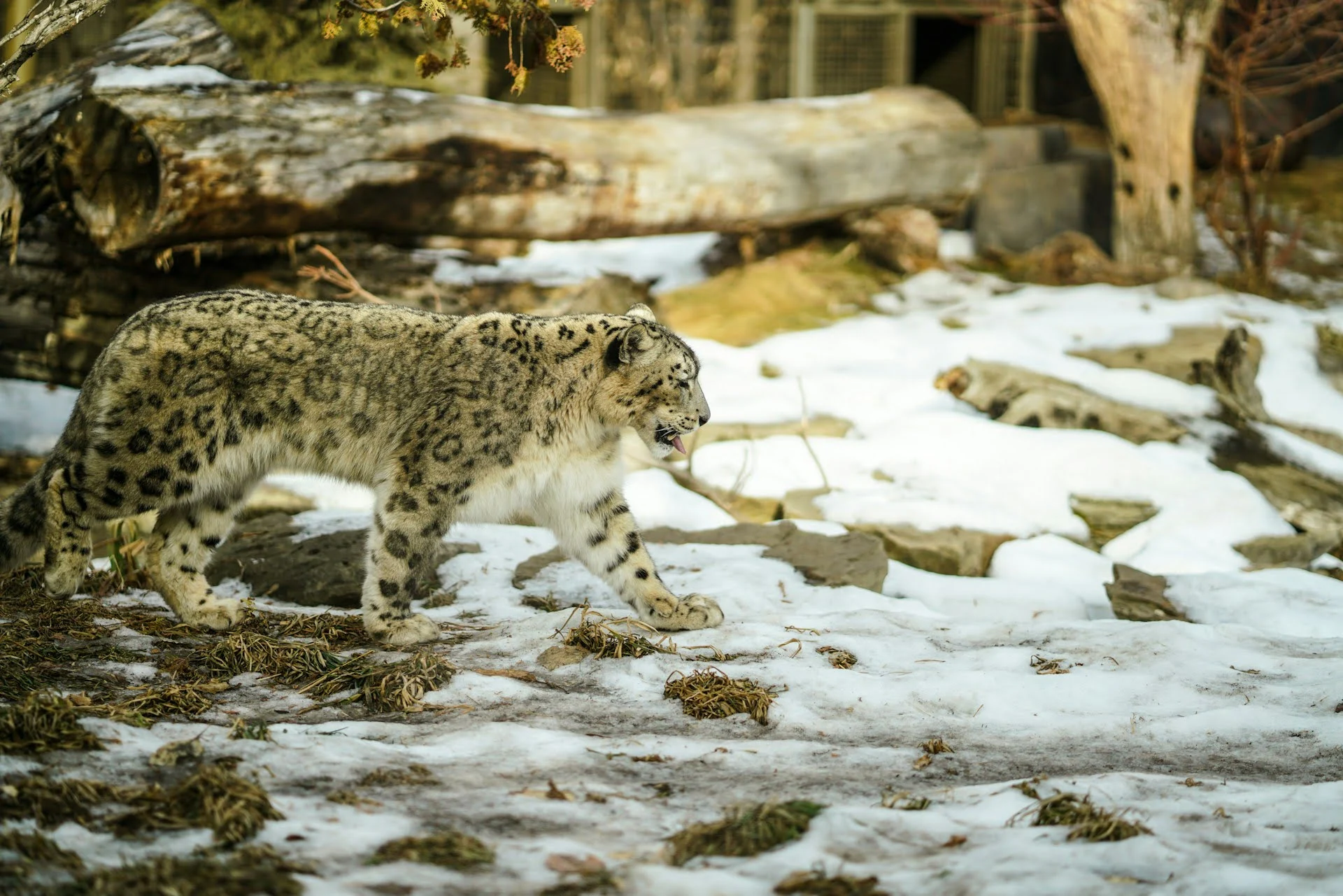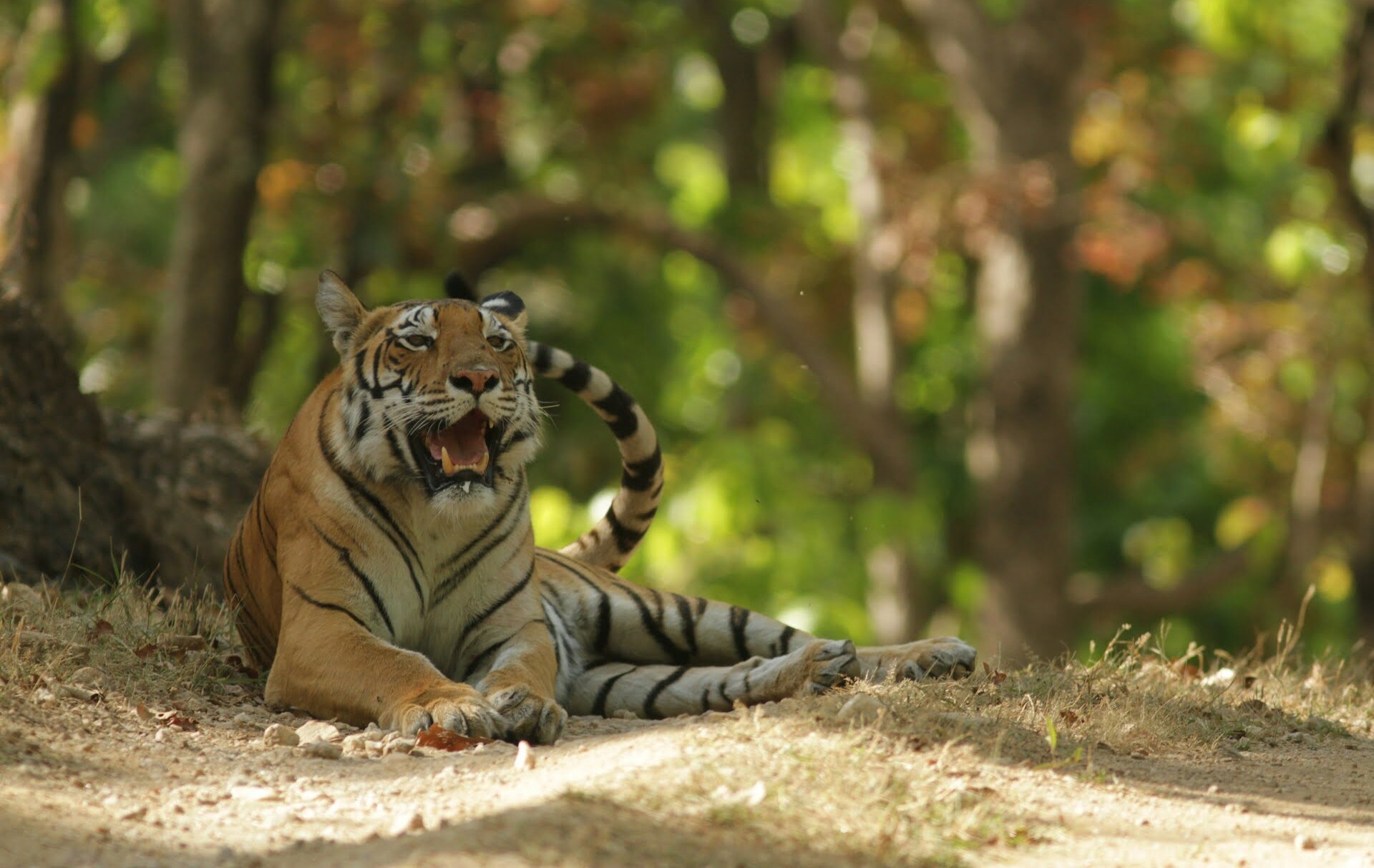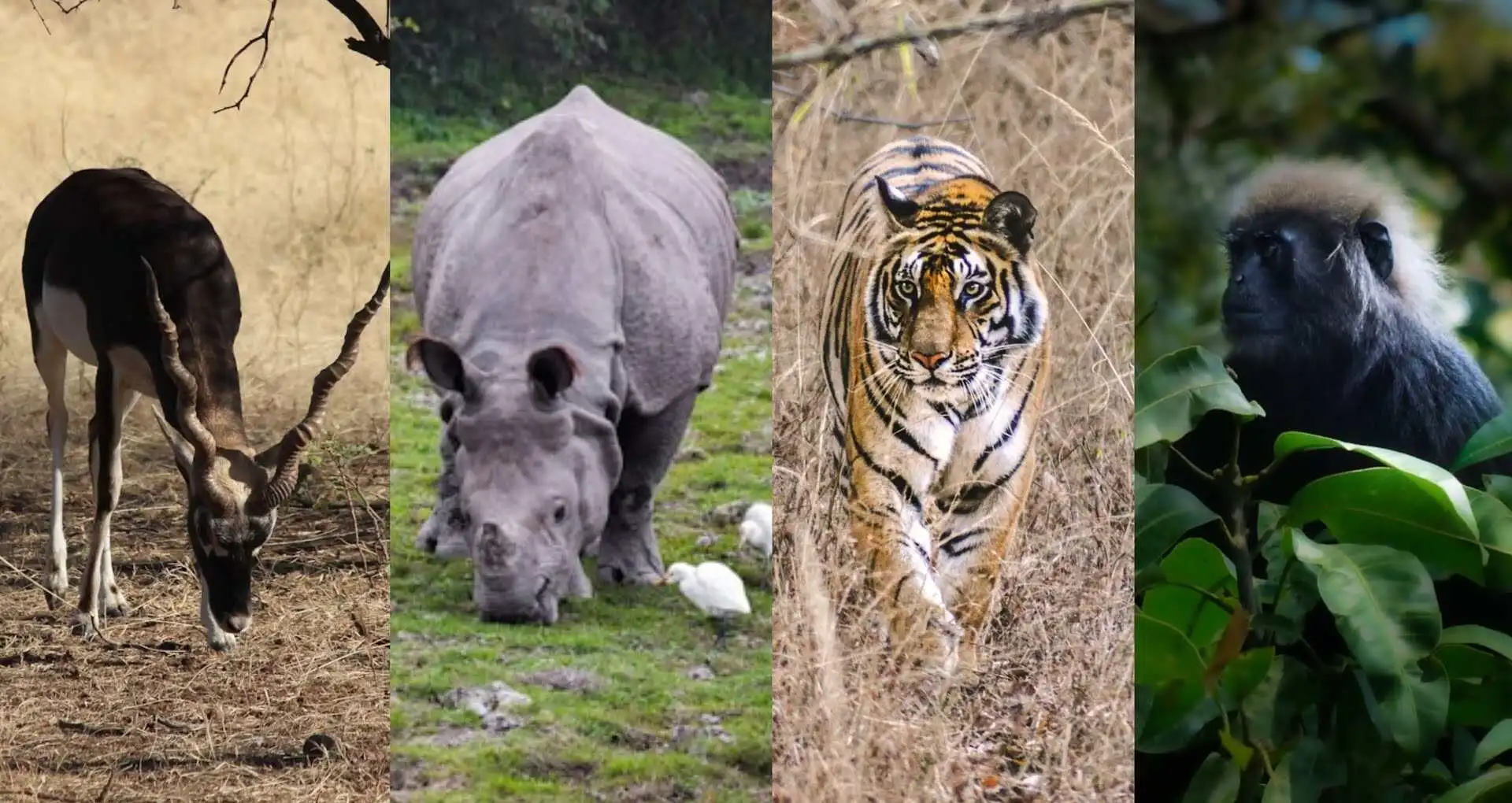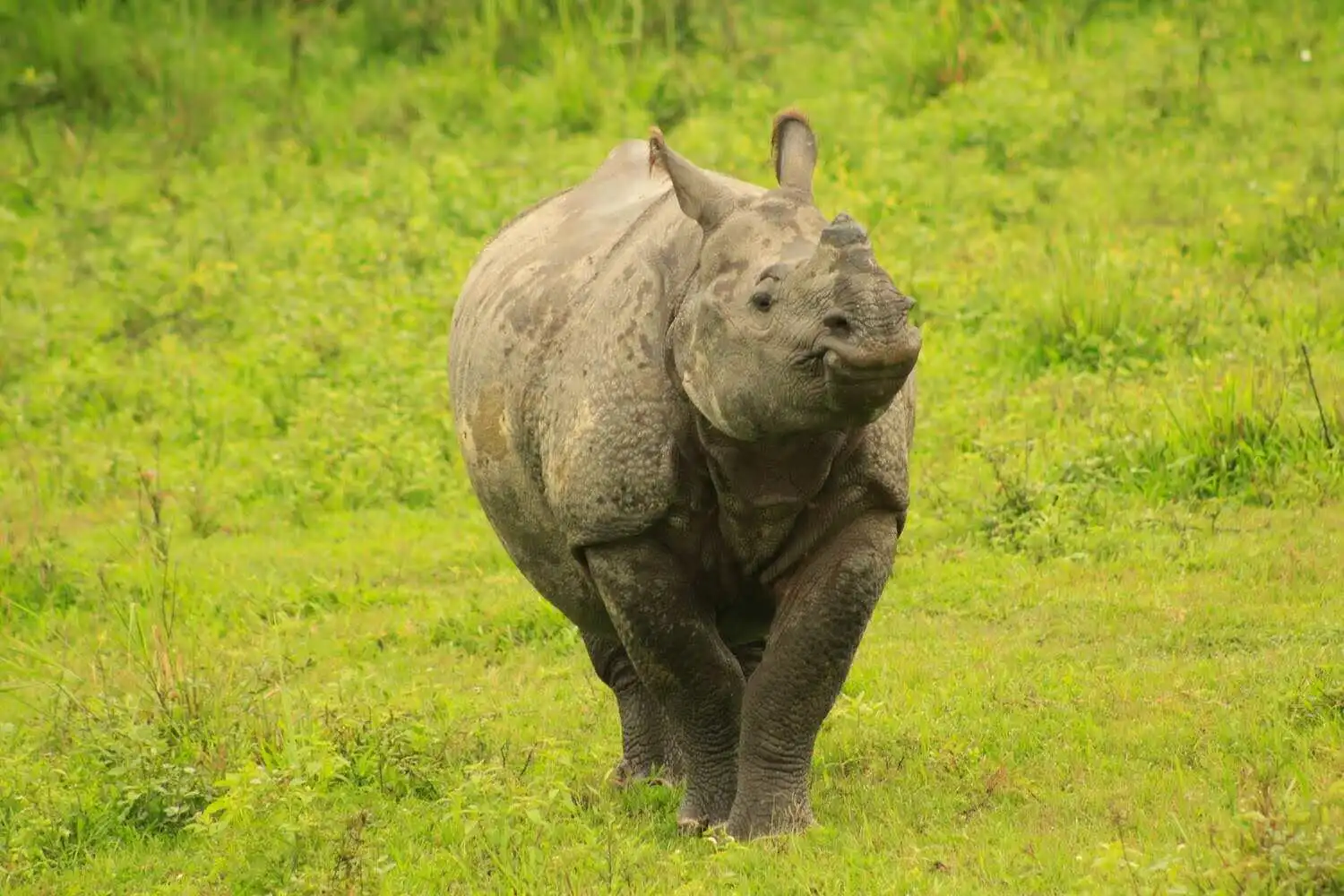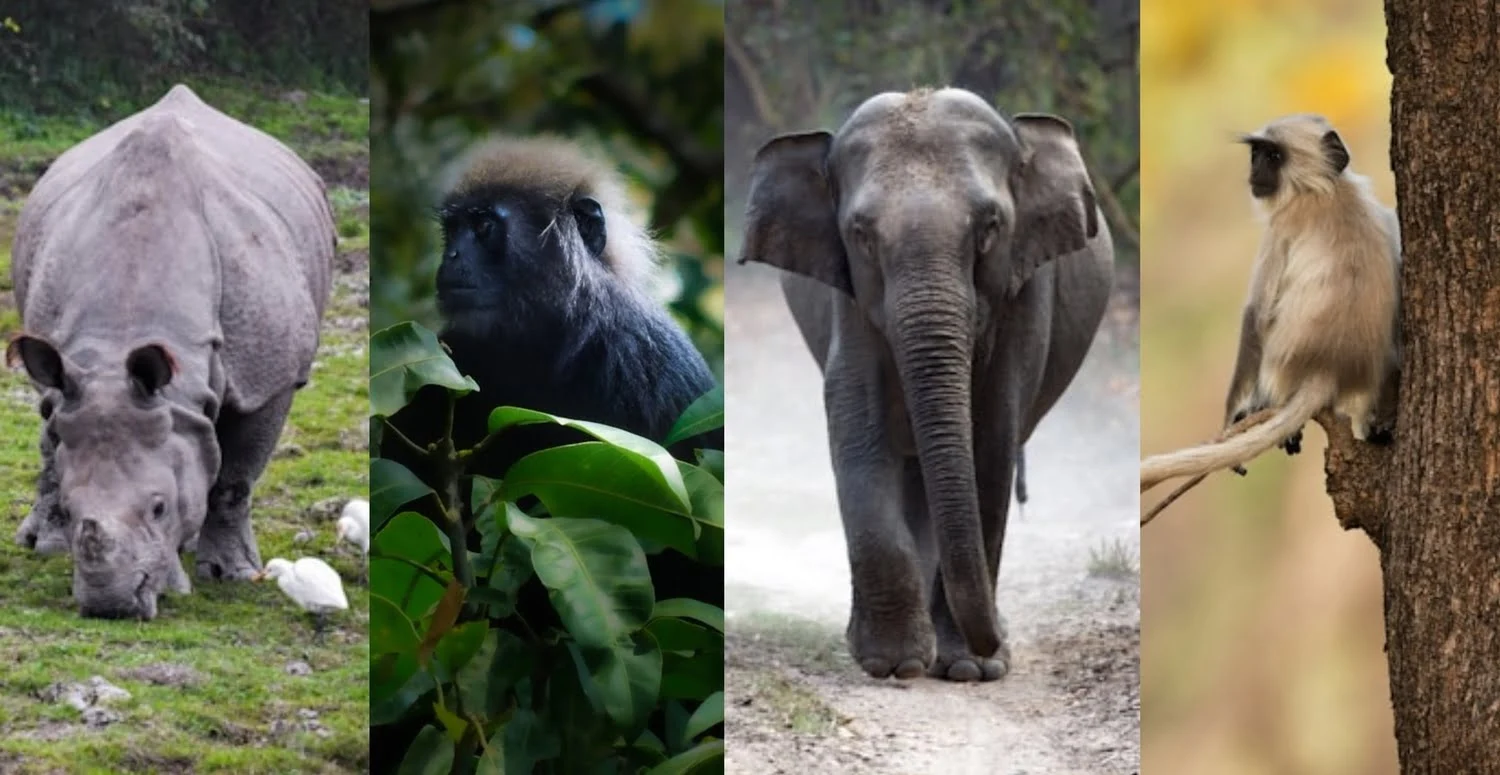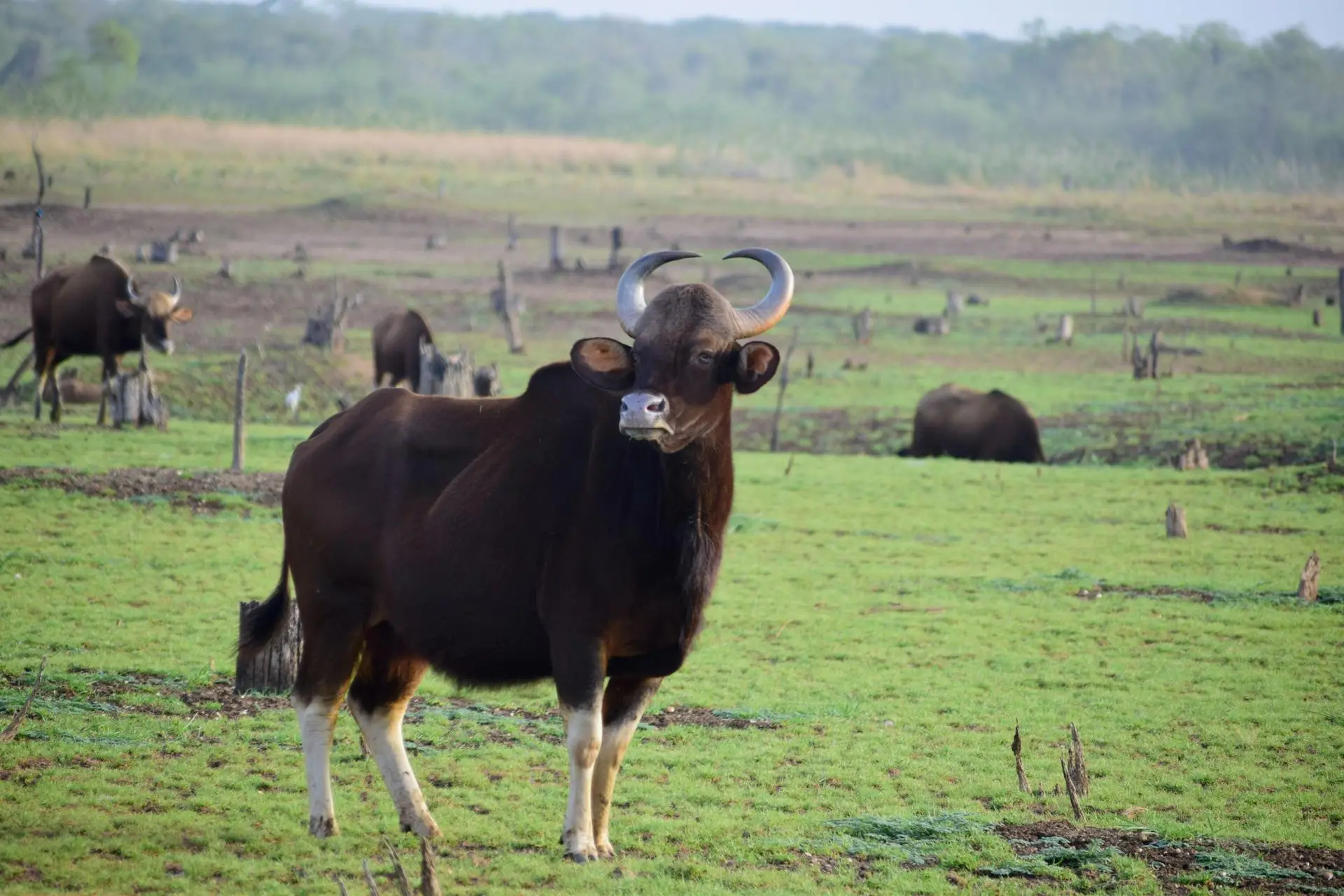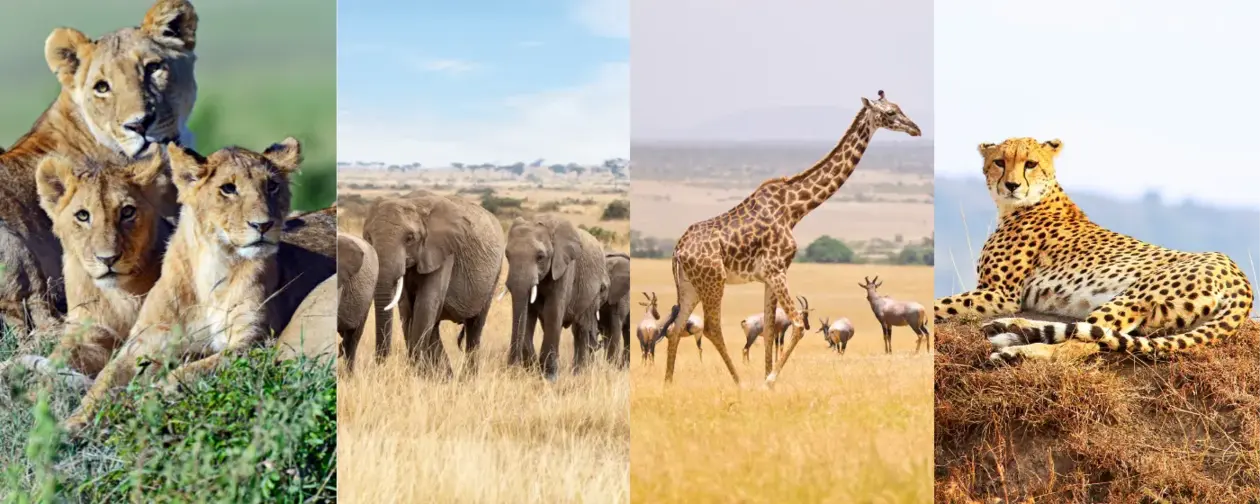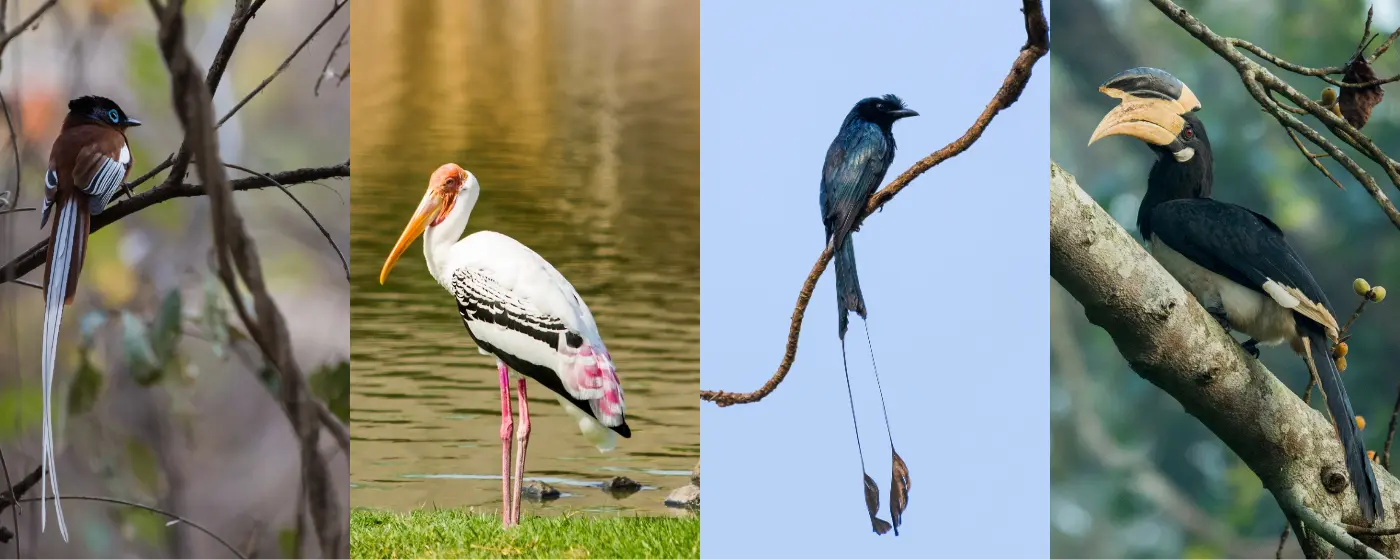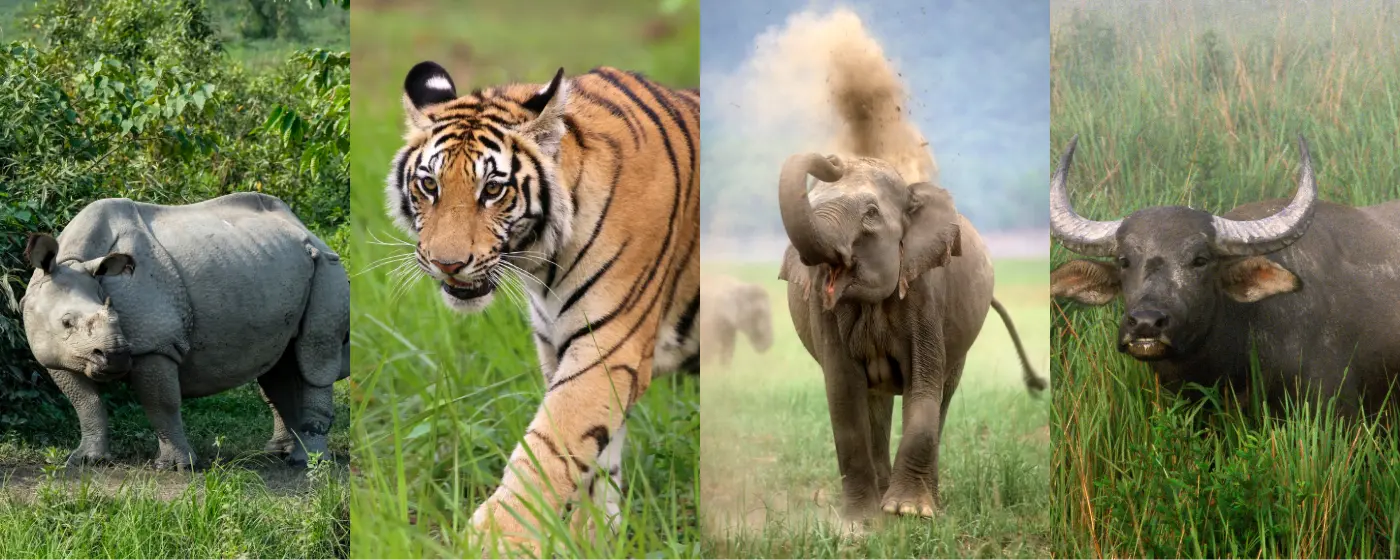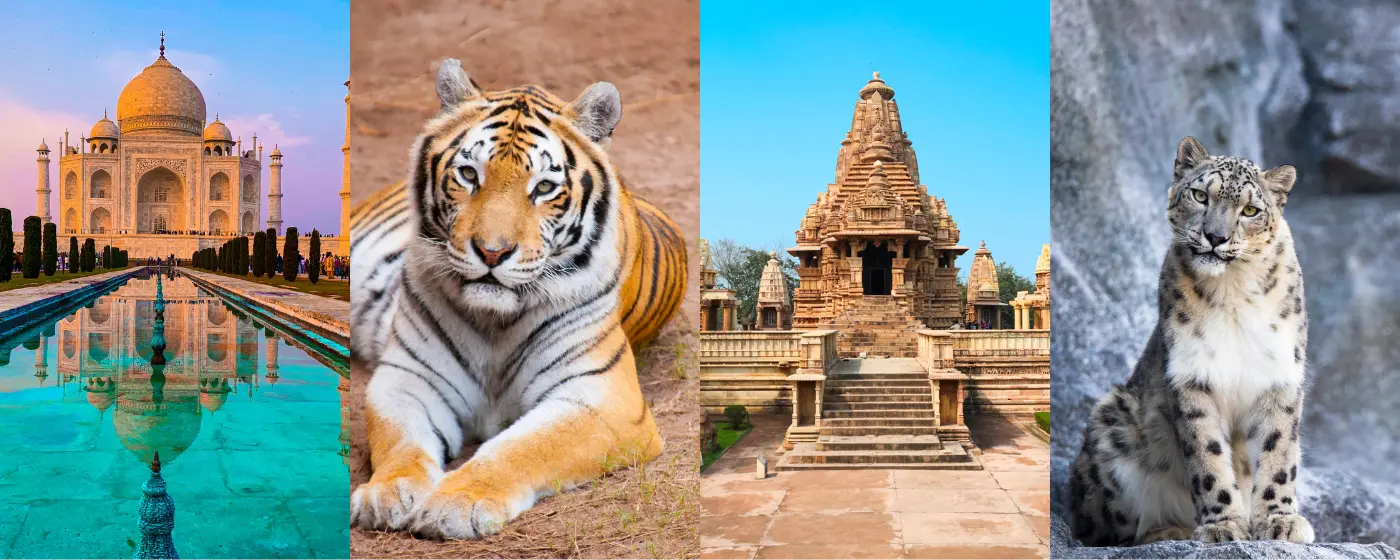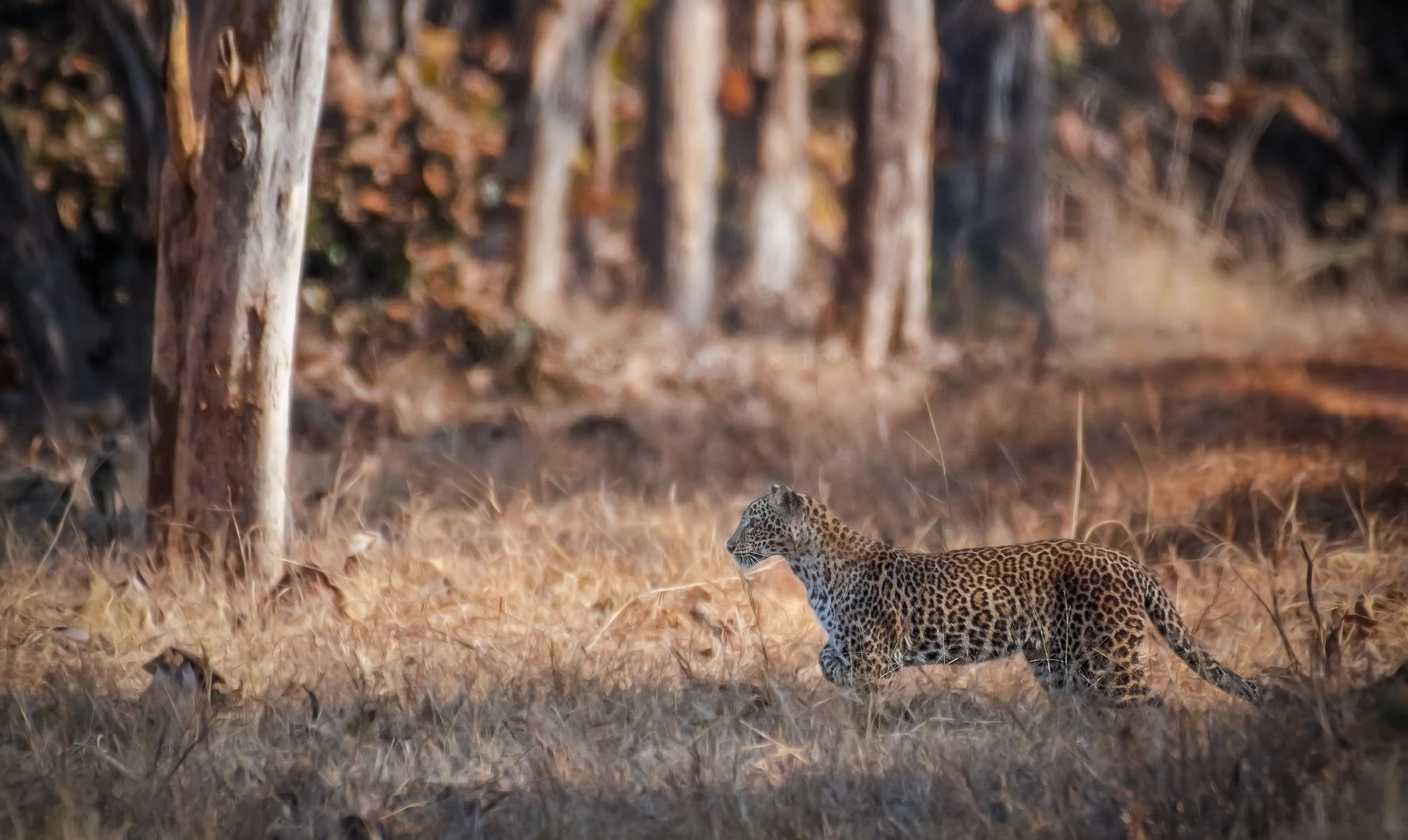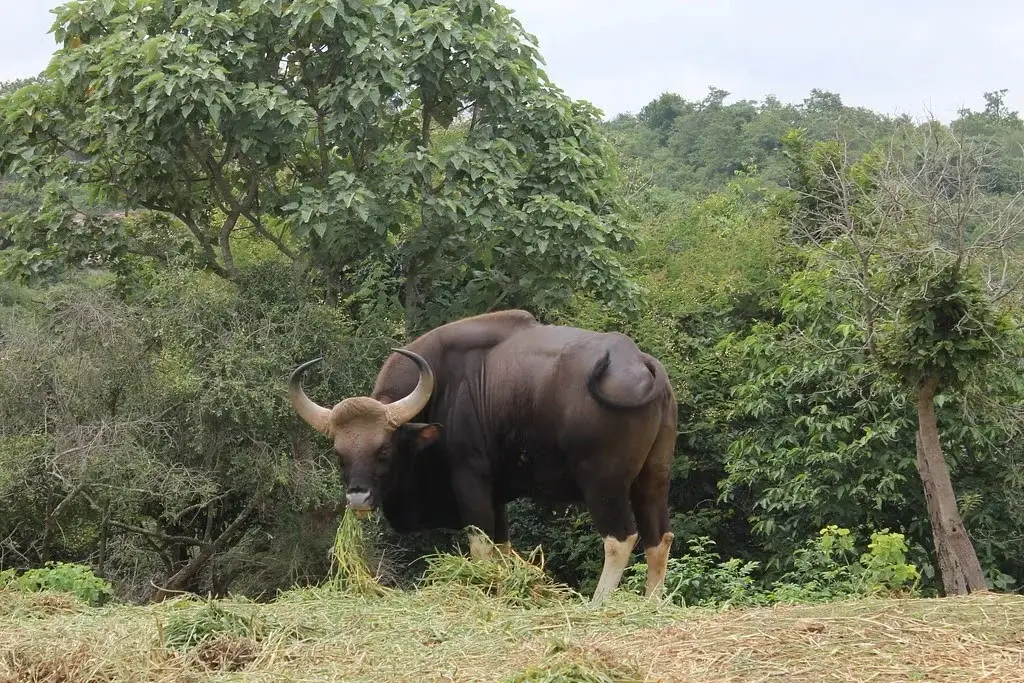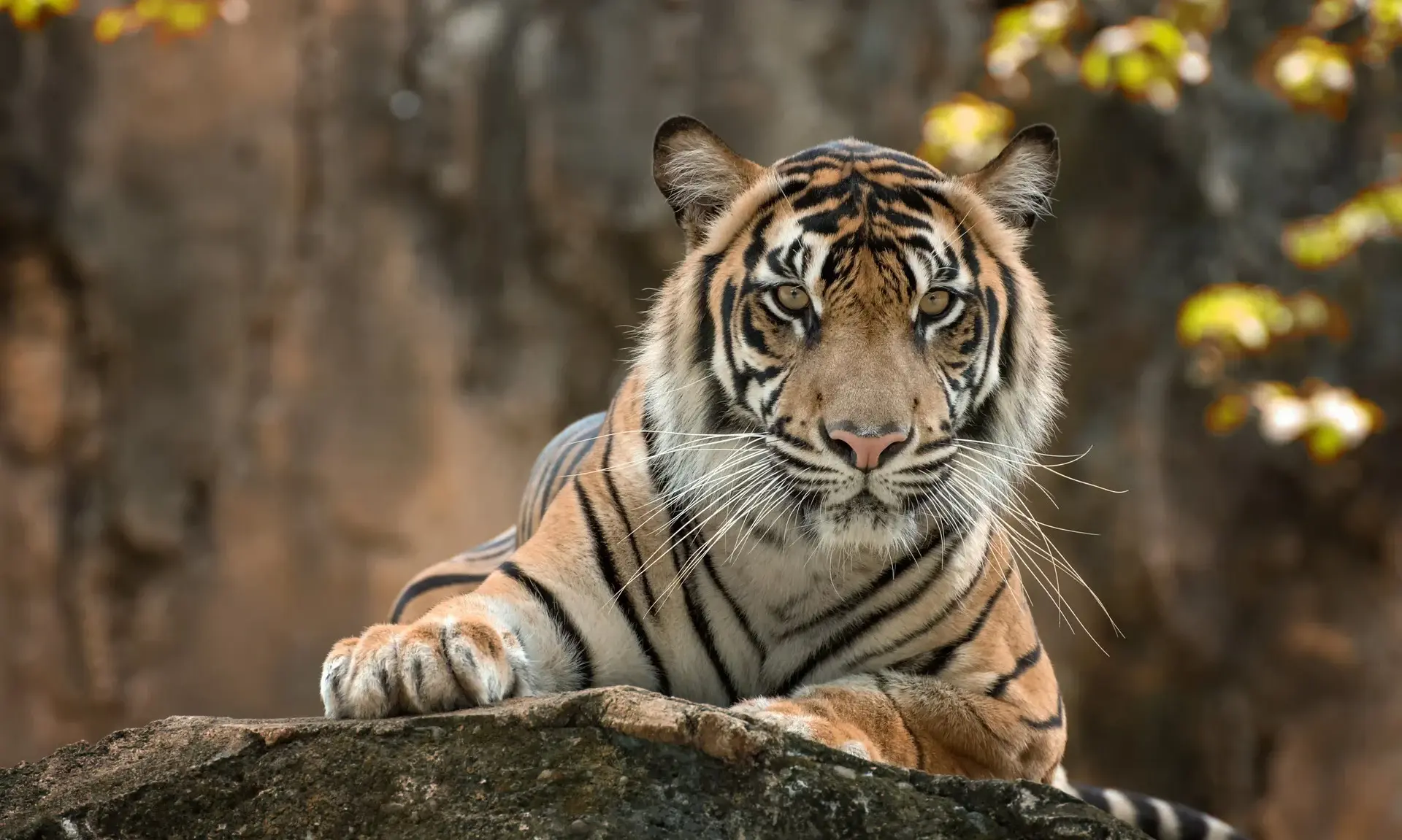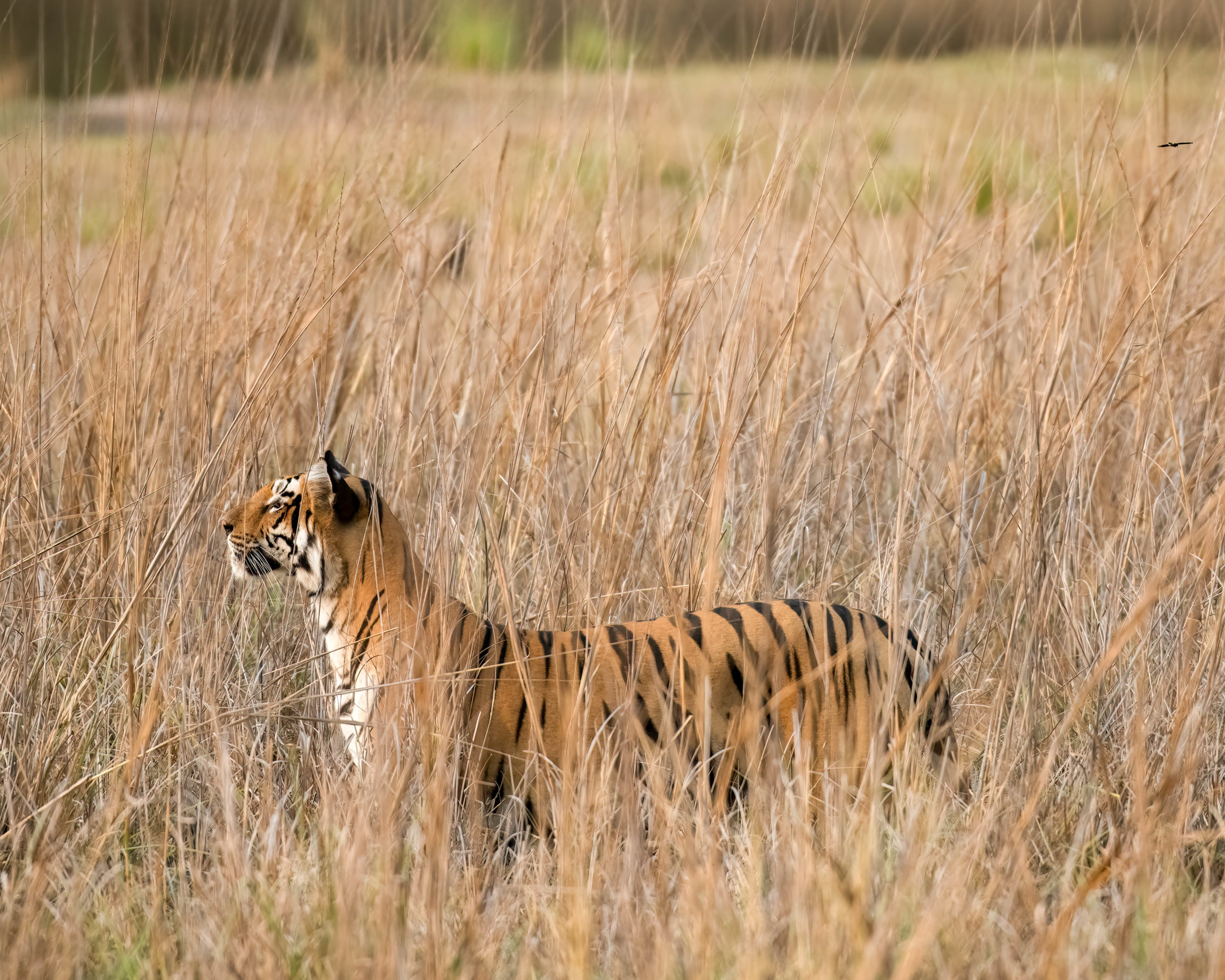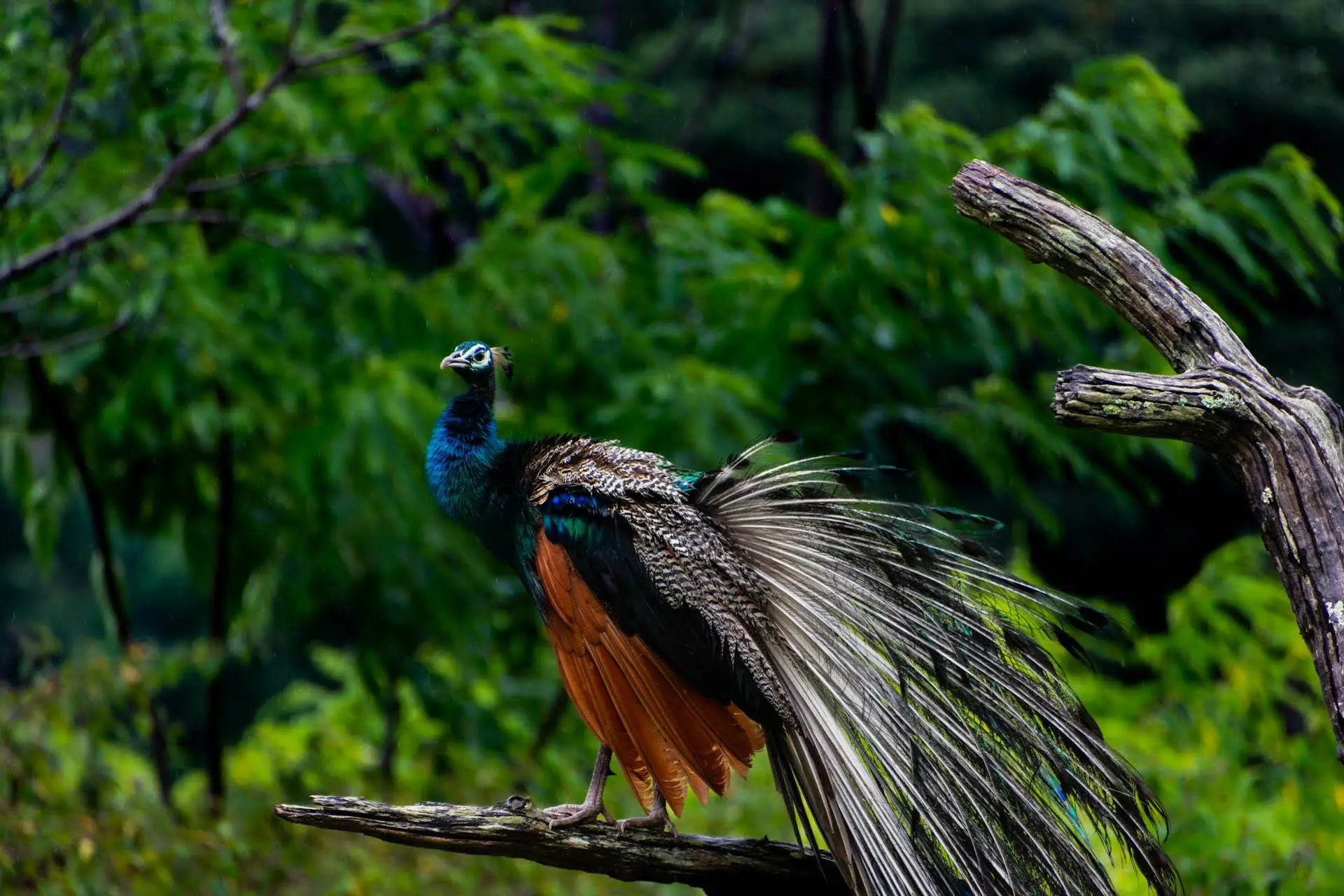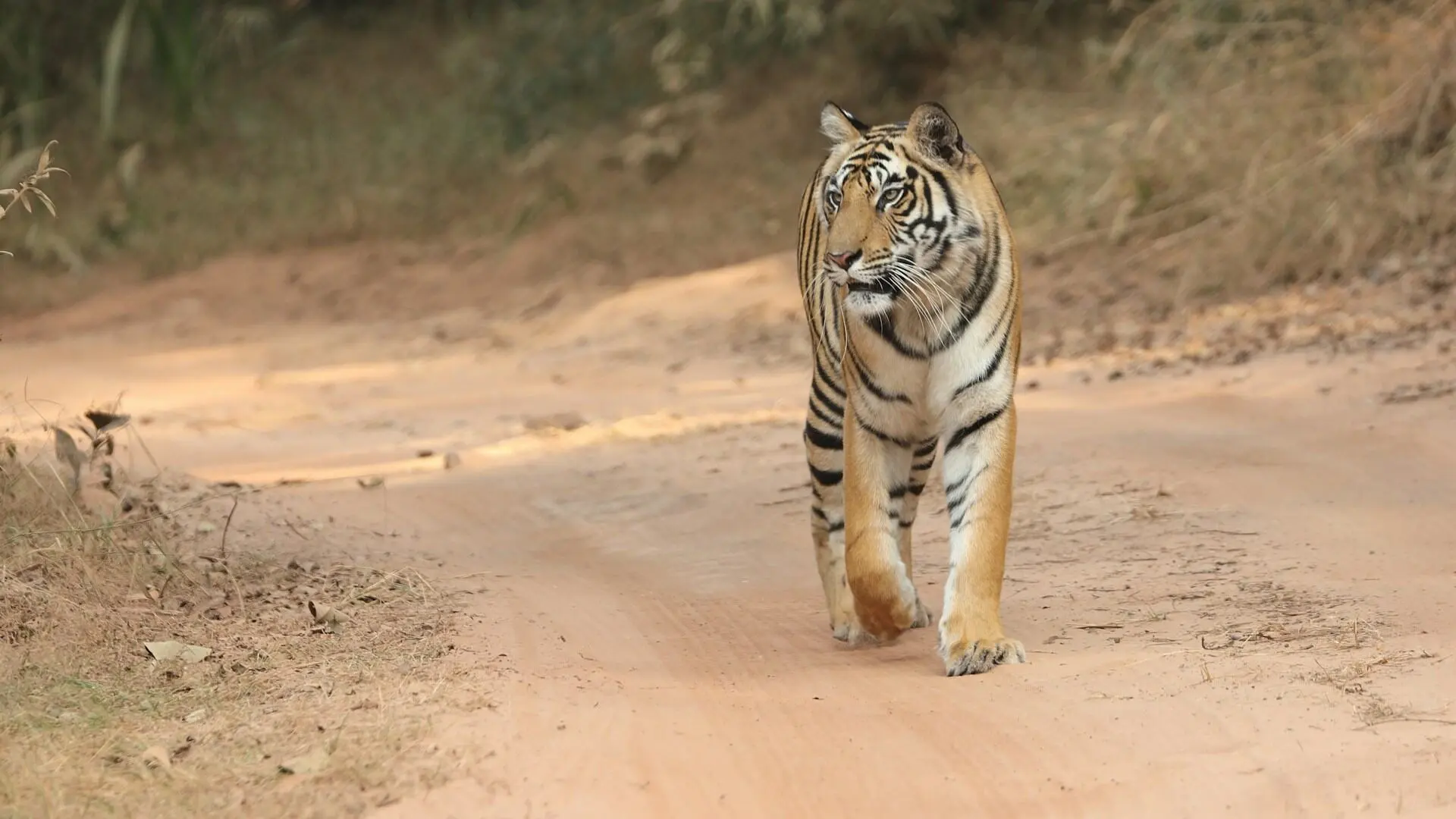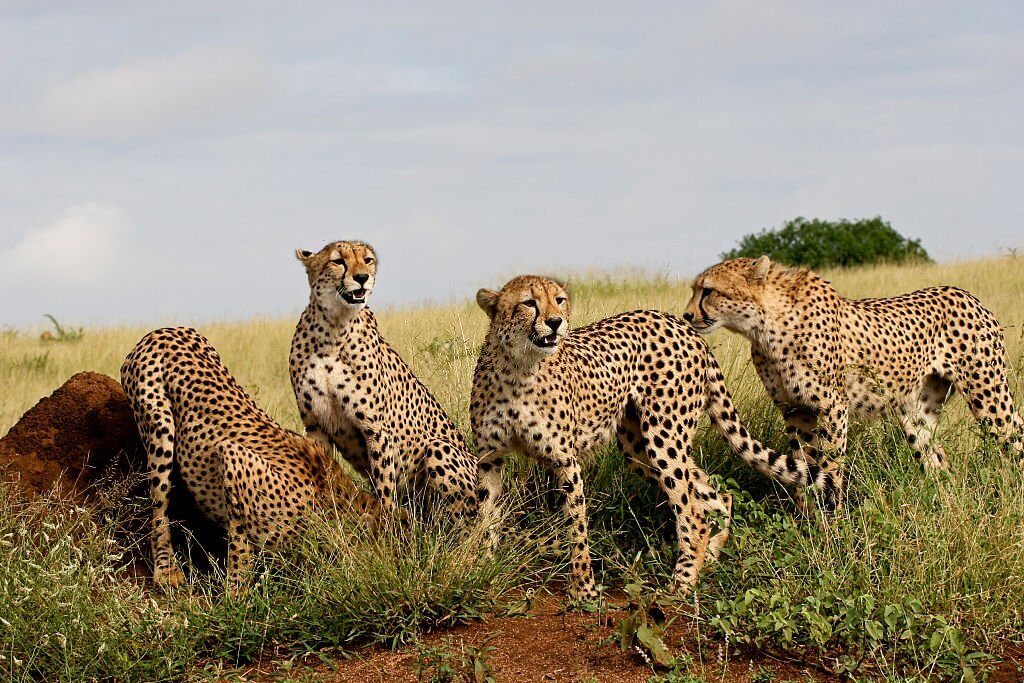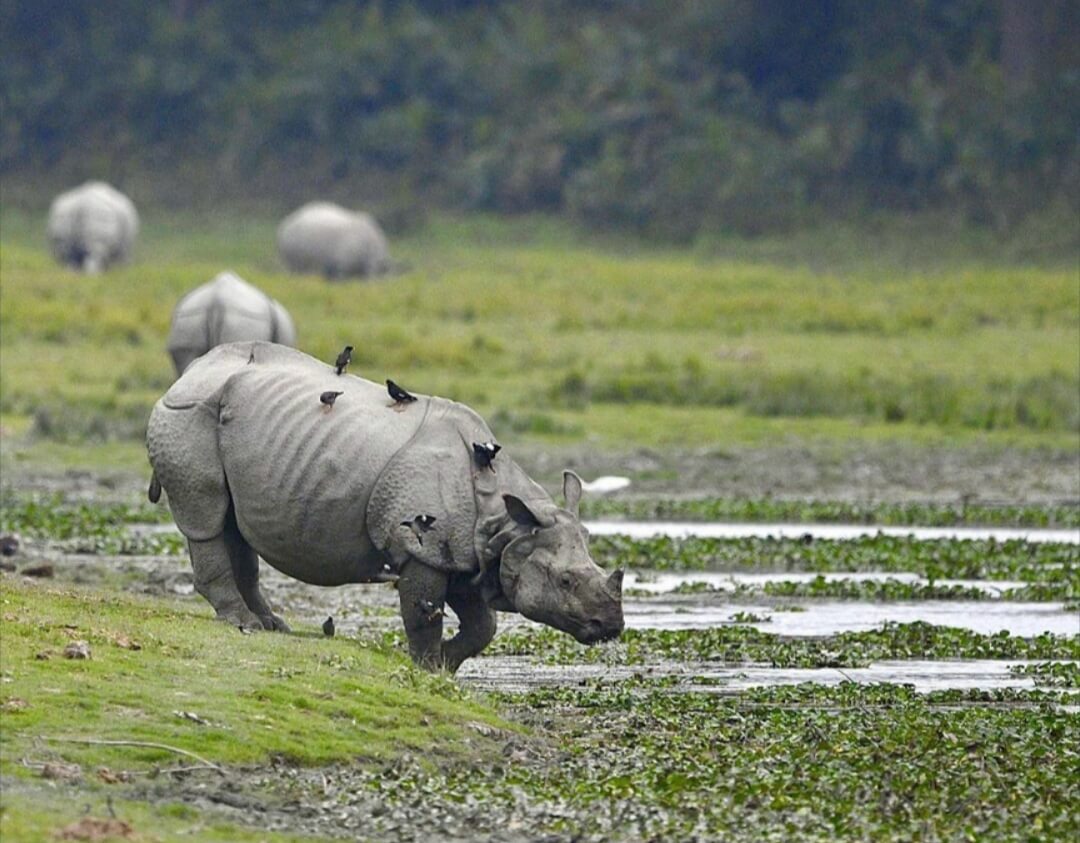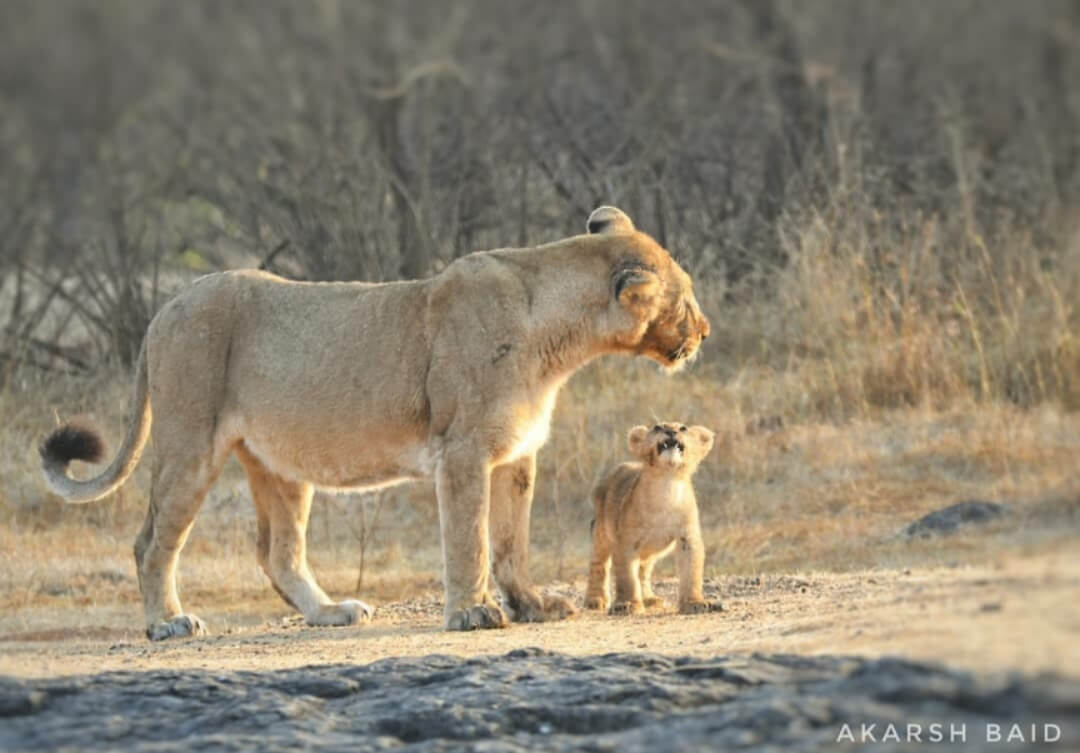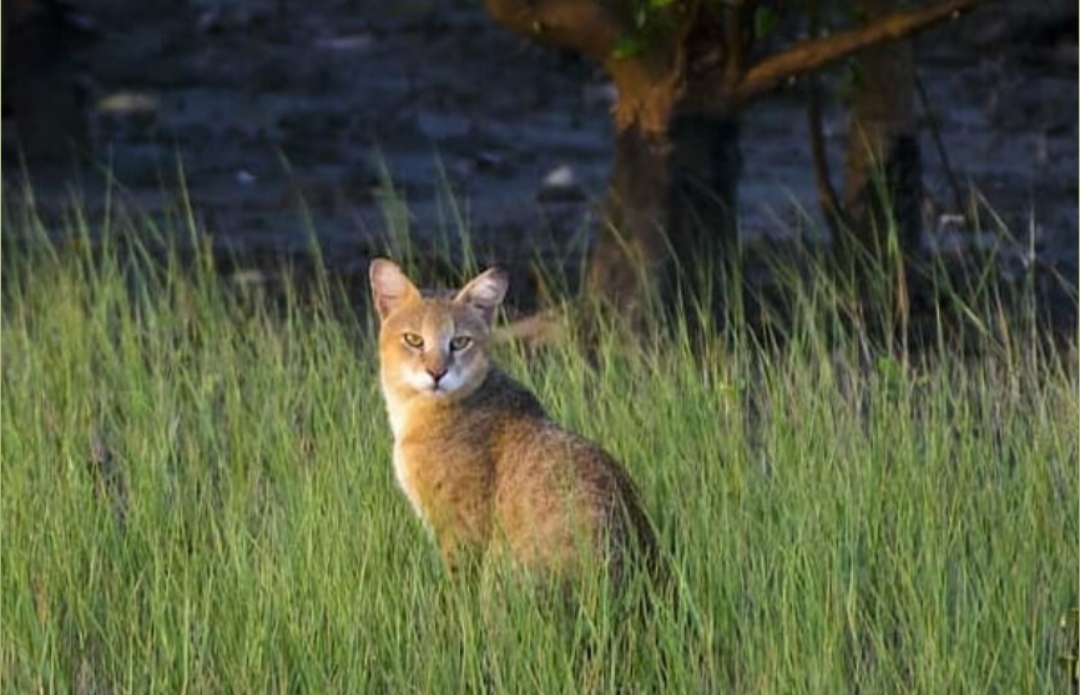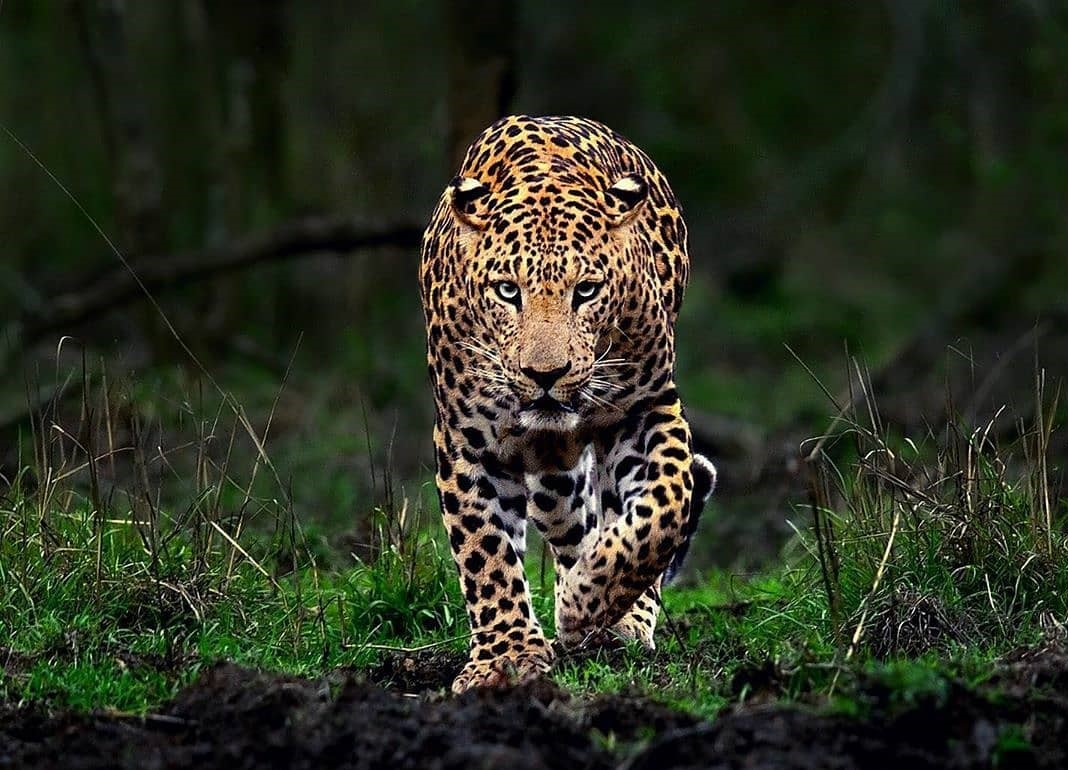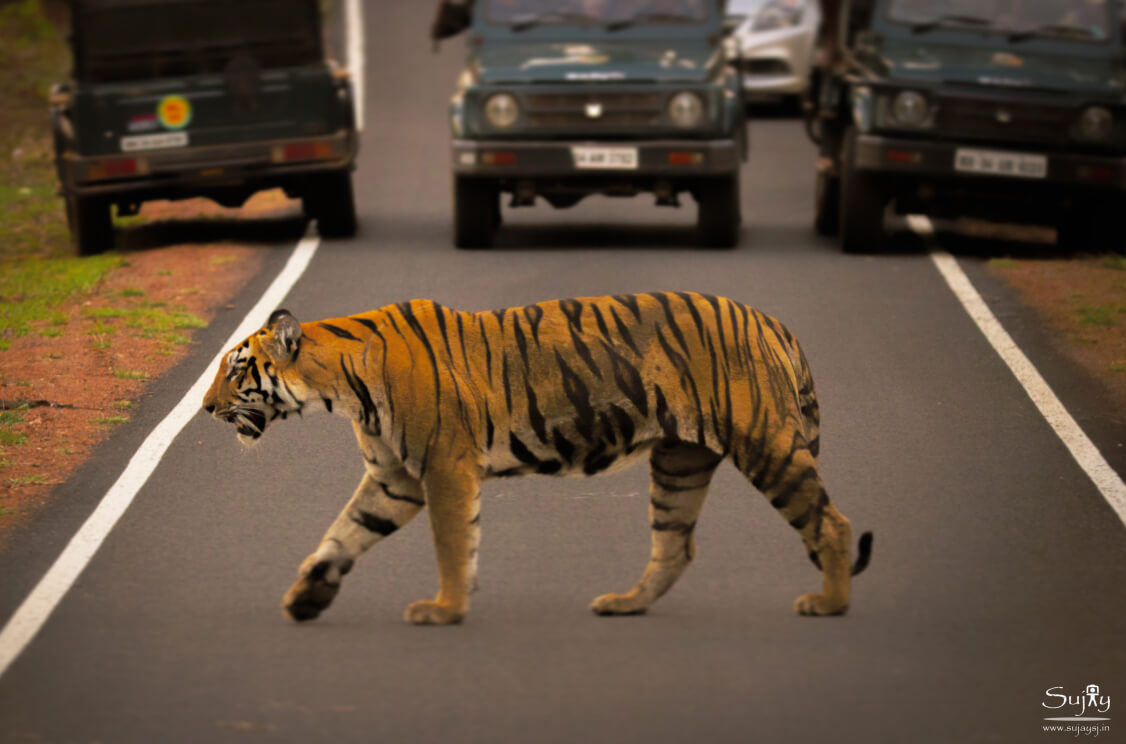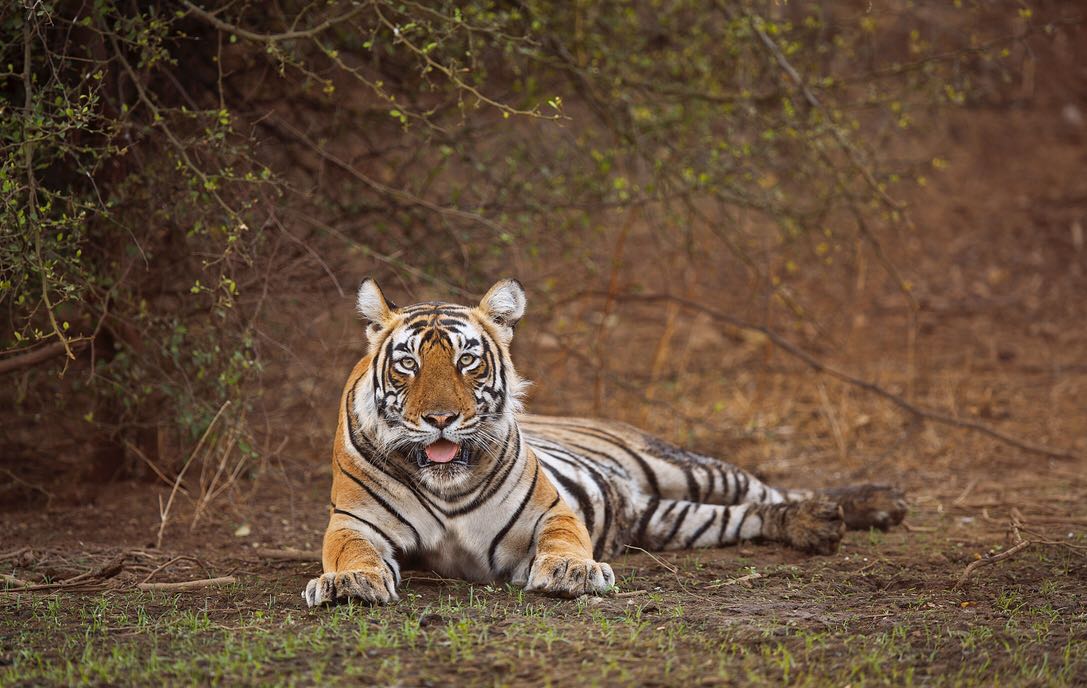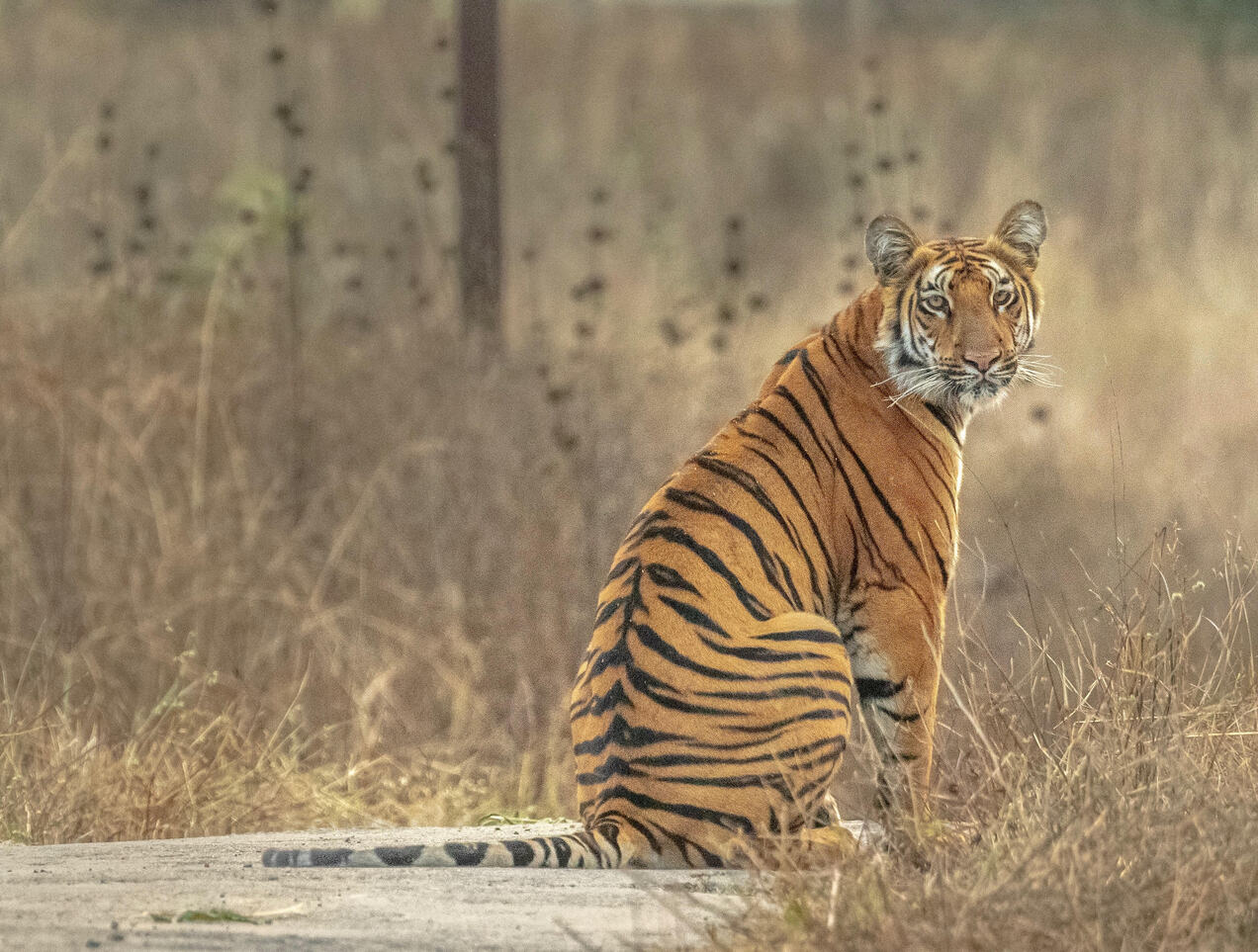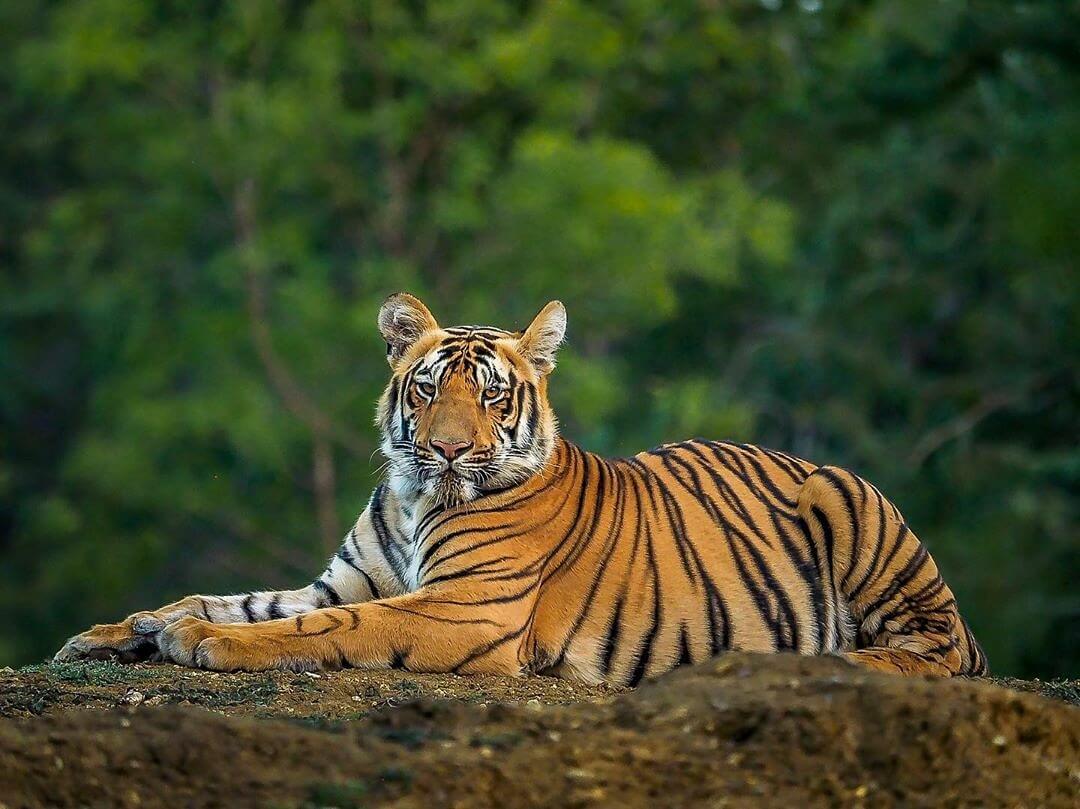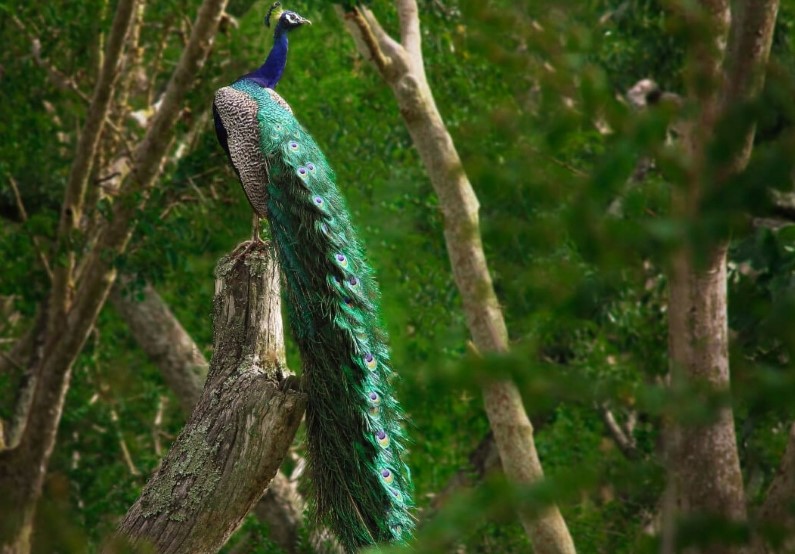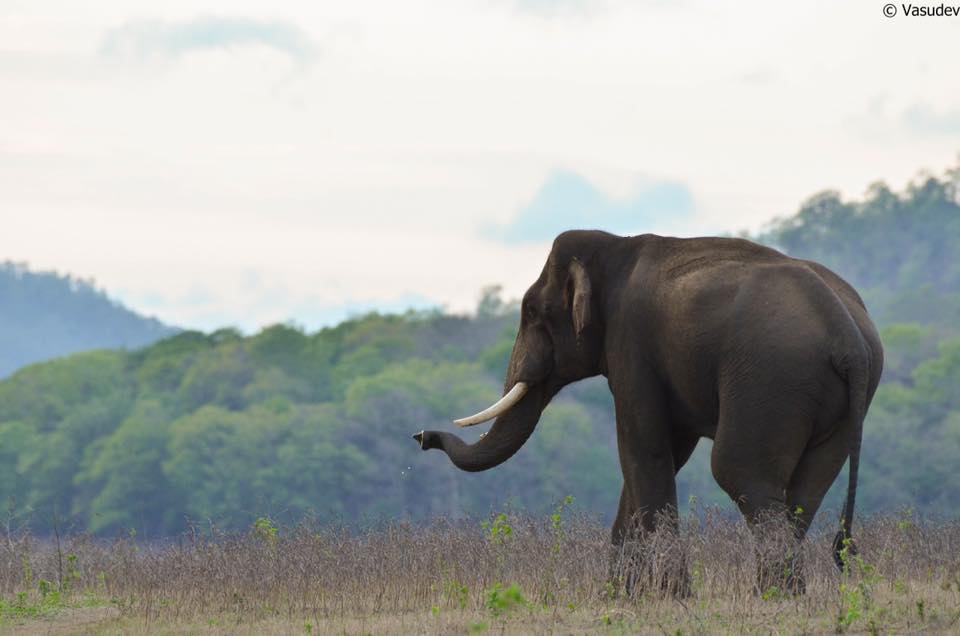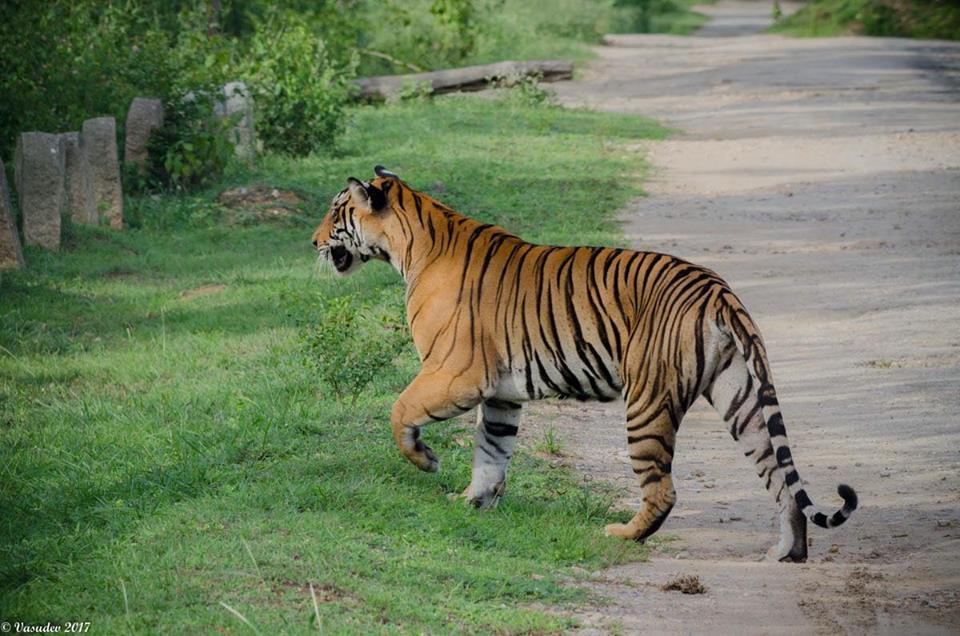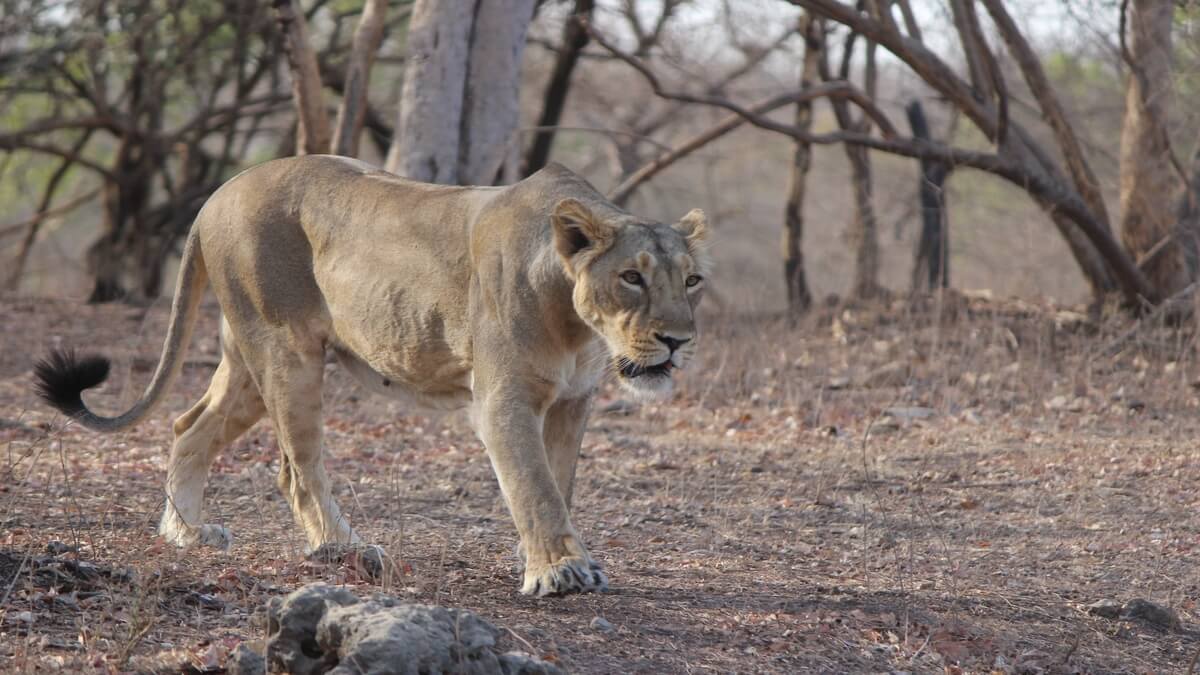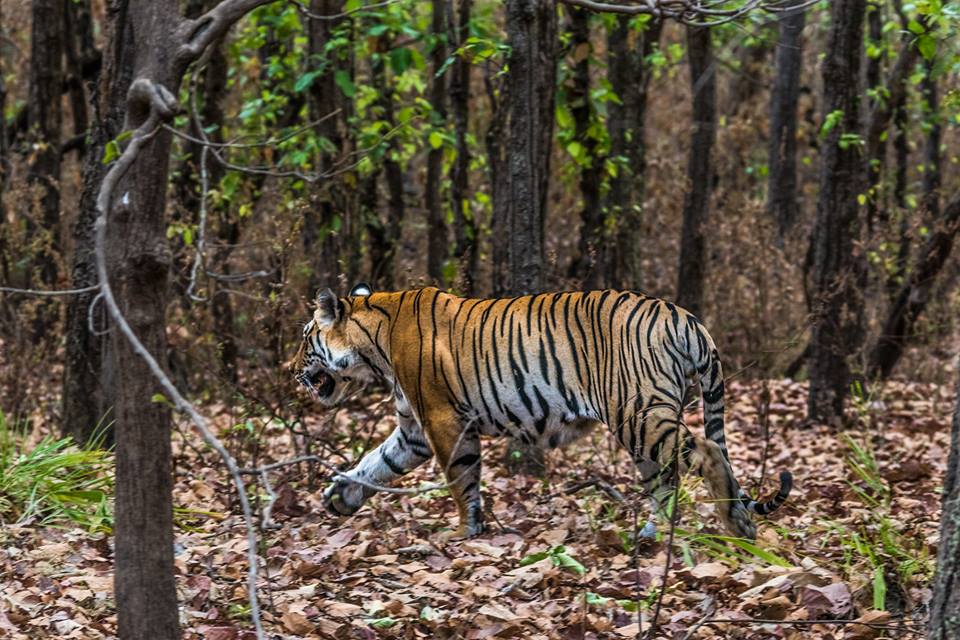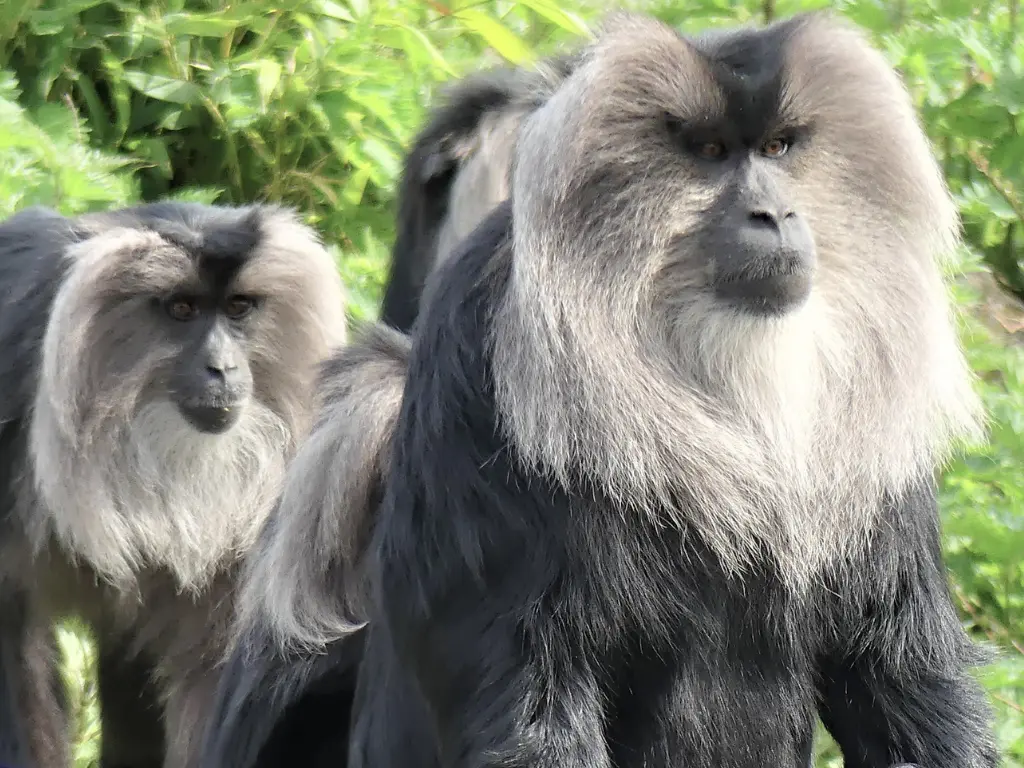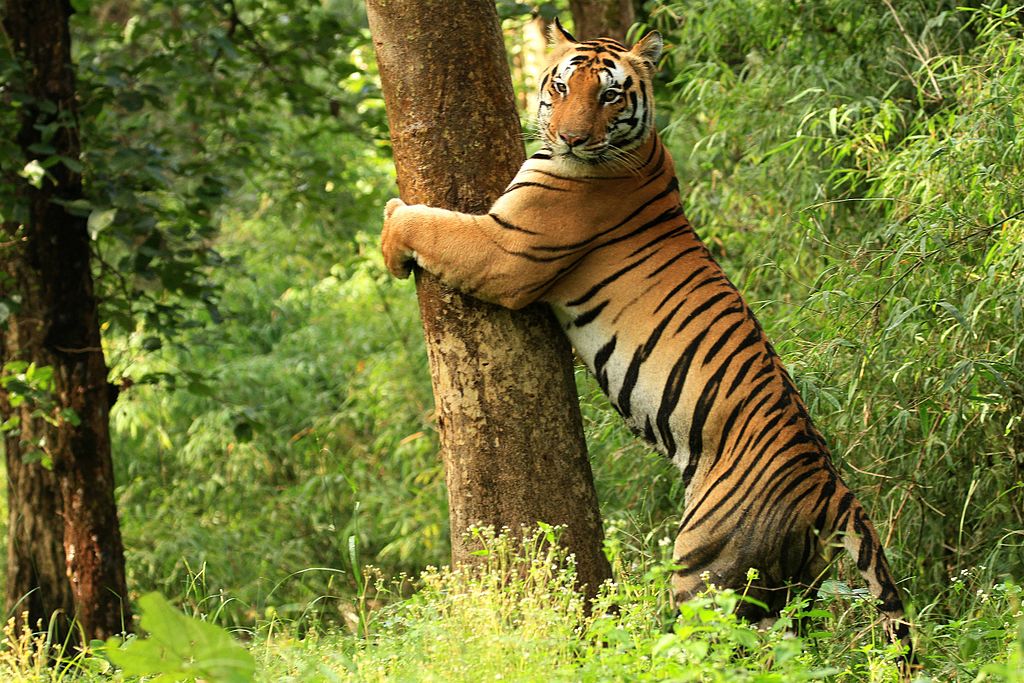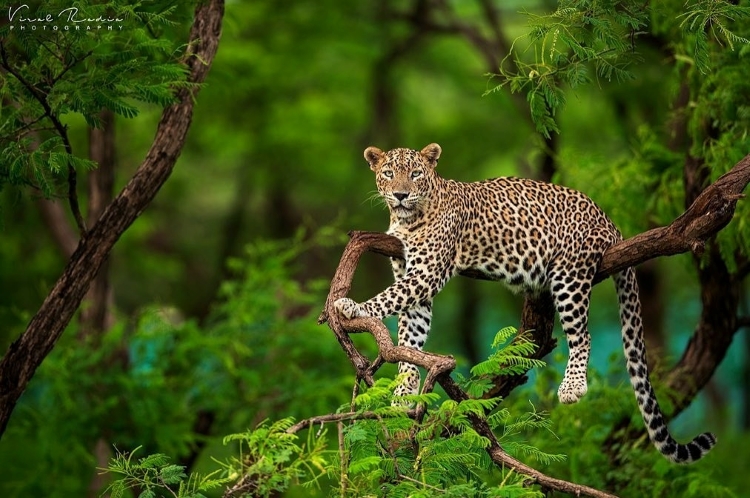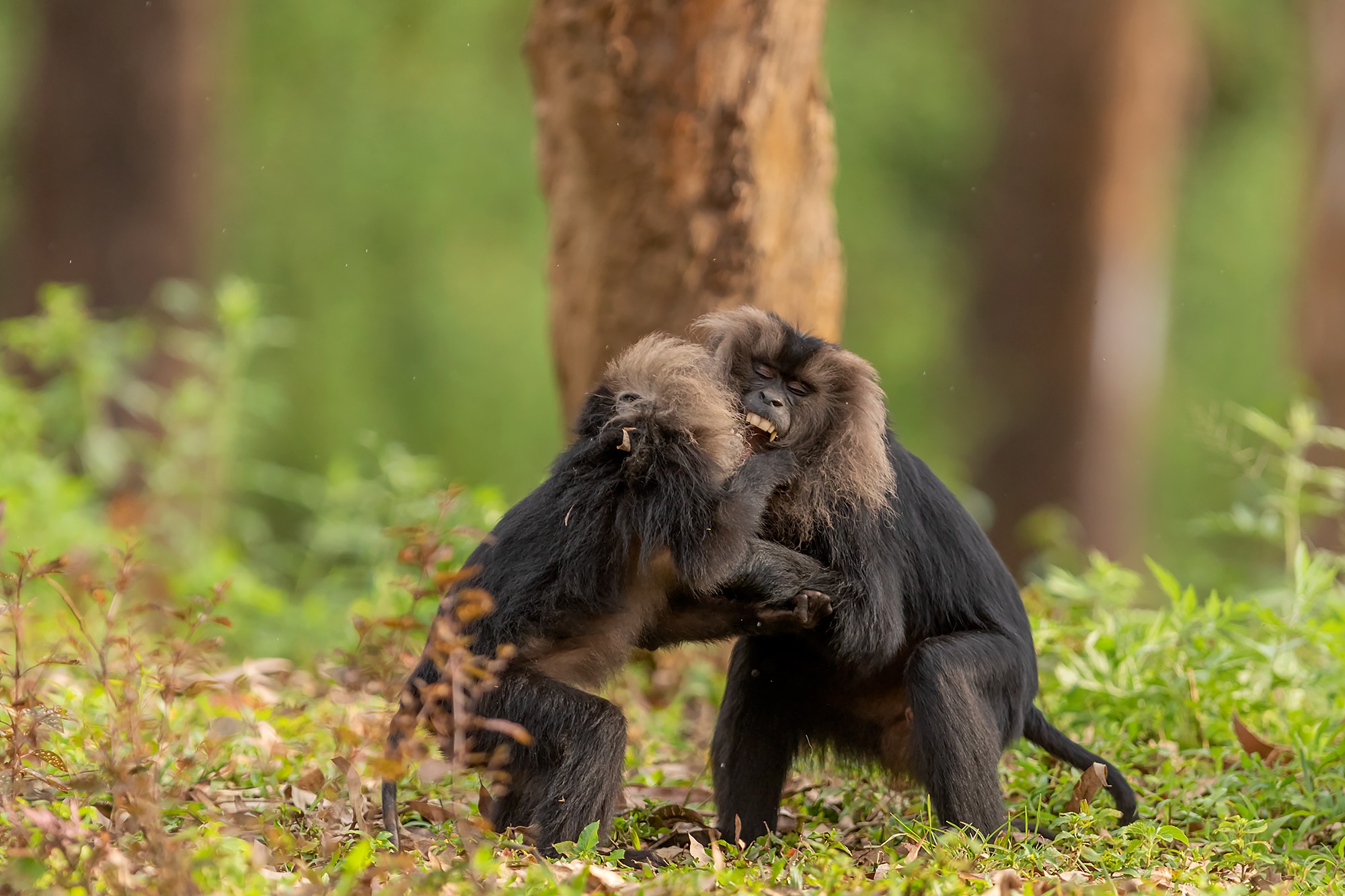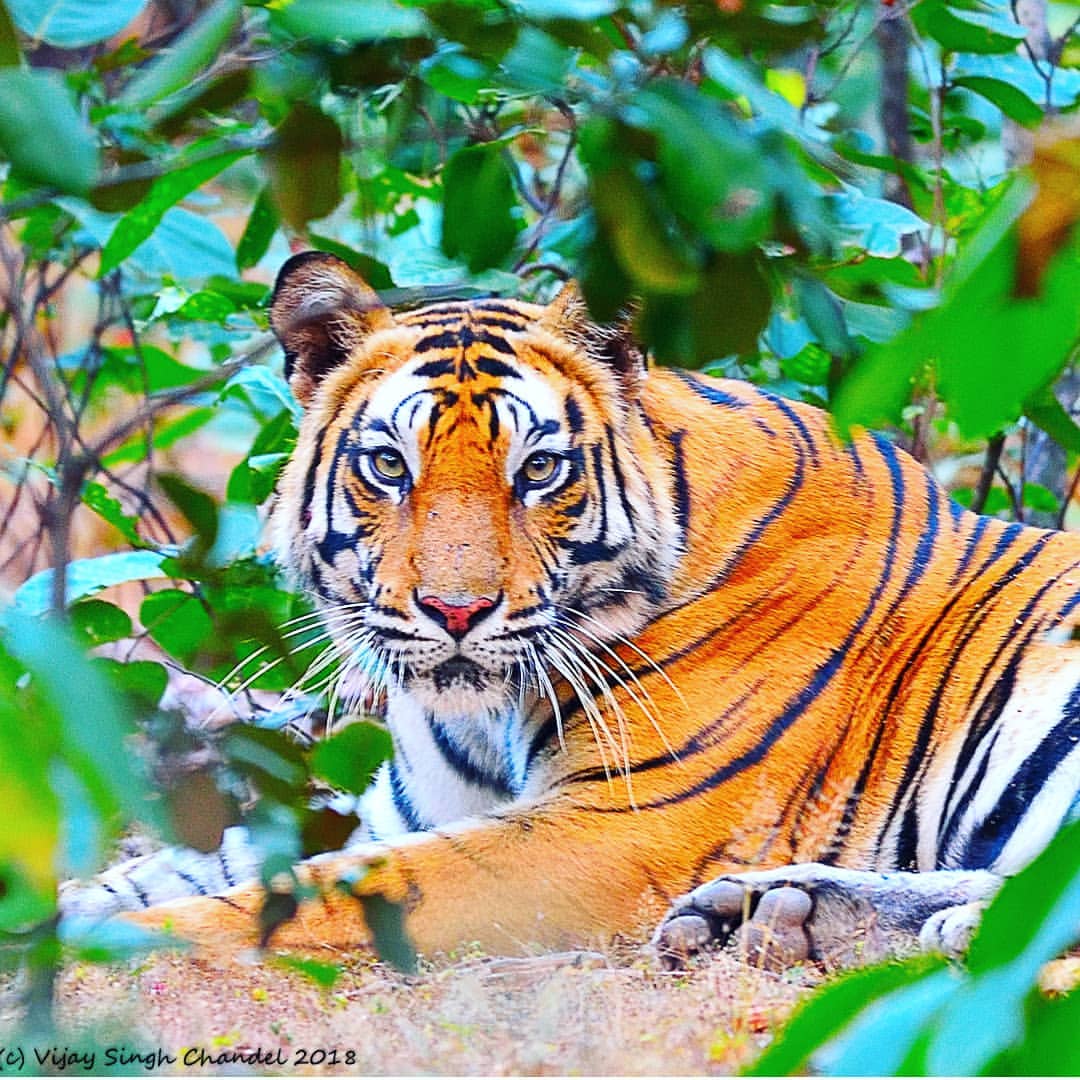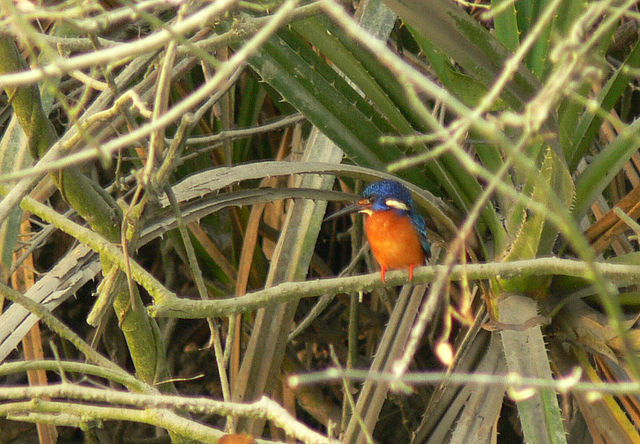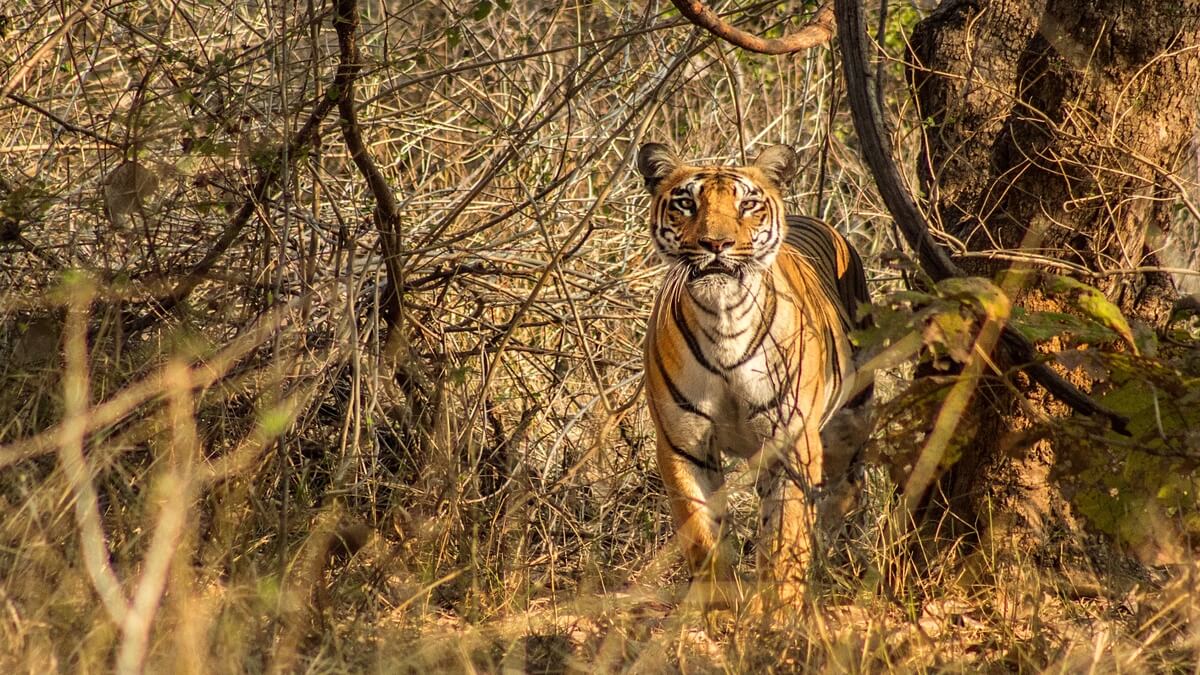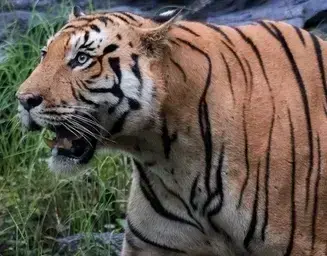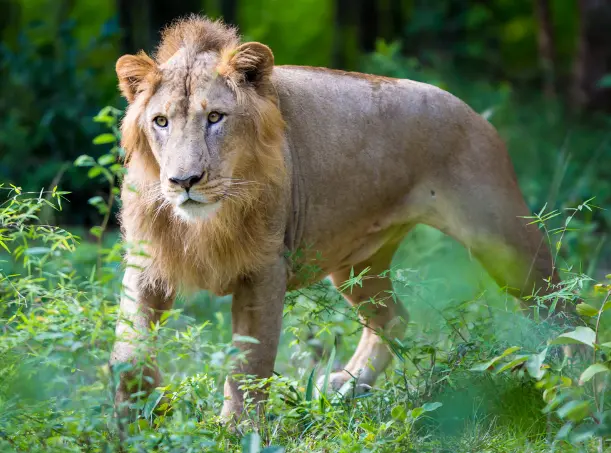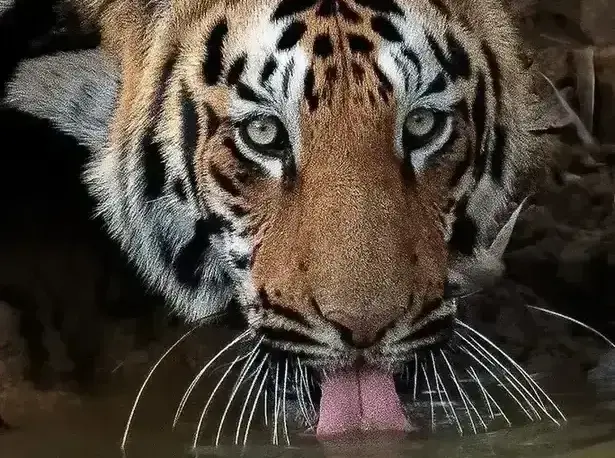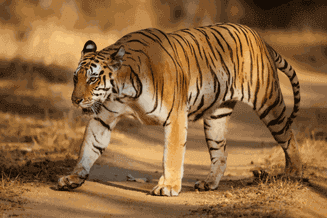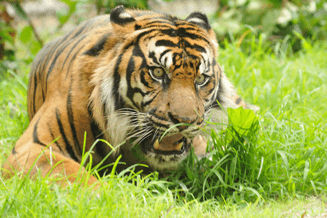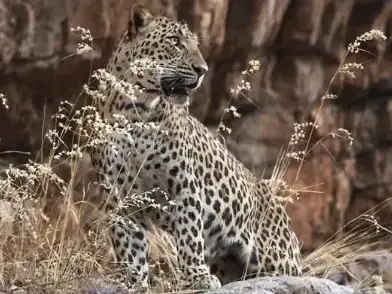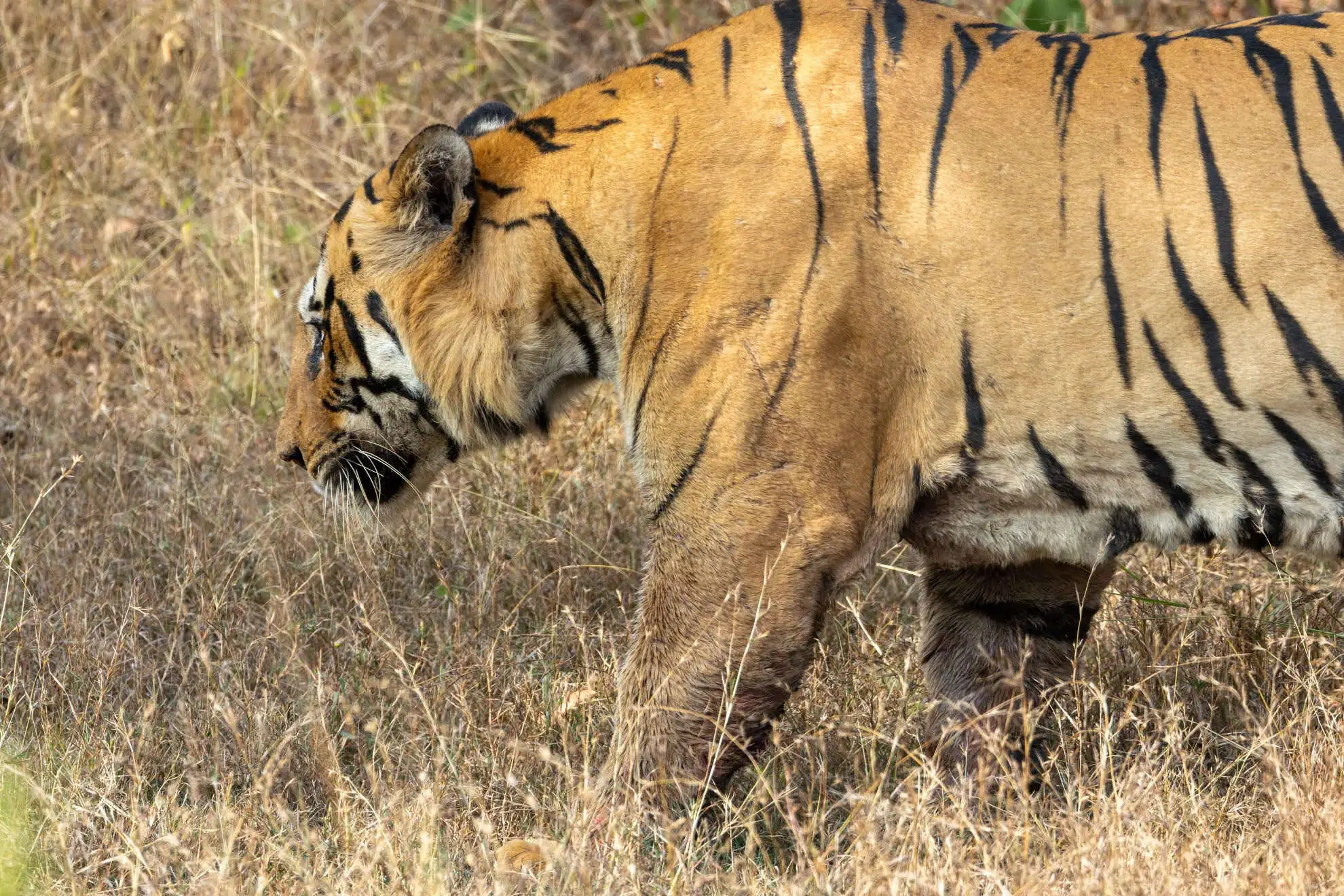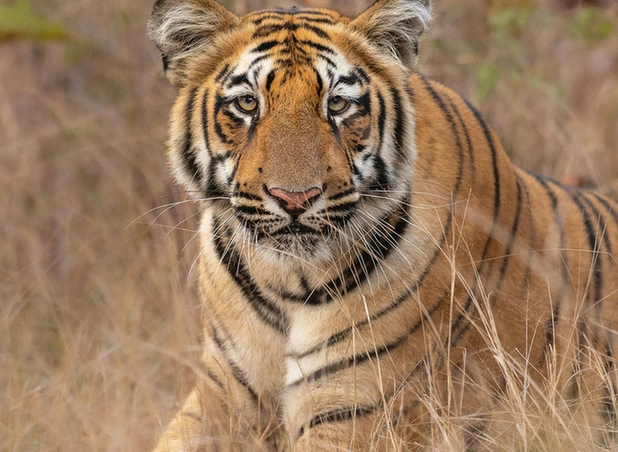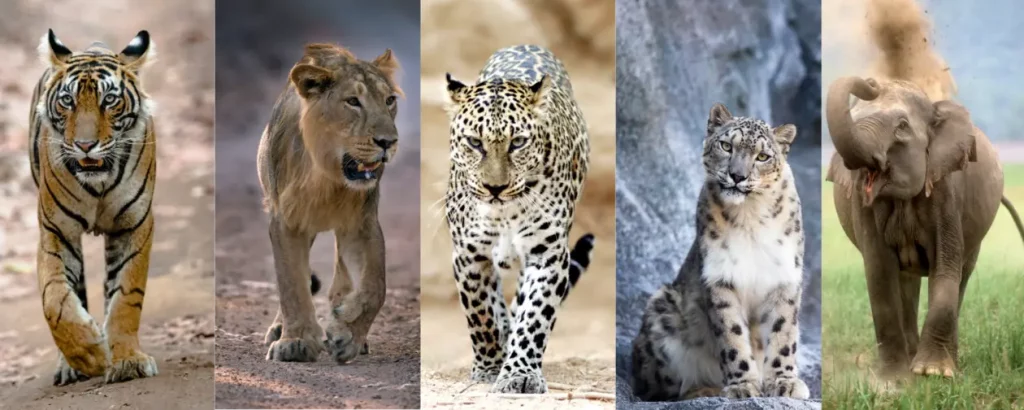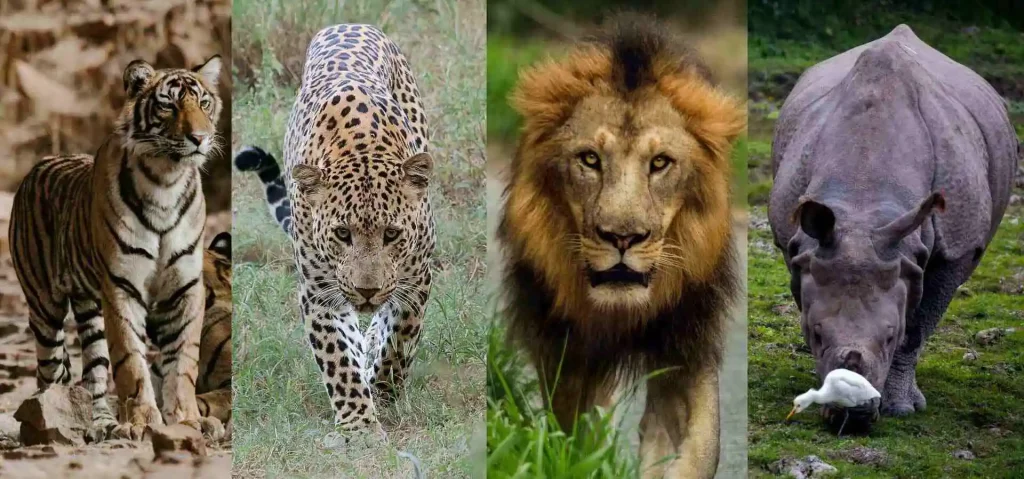The Majestic Indian Elephant: A Symbol of Strength and Wisdom
The Indian elephant (Elephas maximus indicus) is one of the most revered and iconic animals in India. Playing a crucial role in Indian culture, religion, and mythology, these gentle giants are symbols of strength, wisdom, and peace. Apart from their cultural significance, they are also key players in maintaining forest ecosystems by dispersing seeds and creating clearings that allow new vegetation to grow.
Physical Appearance of Indian Elephants
Indian elephants are smaller than their African counterparts but are still among the largest land animals. They have a domed head, relatively smaller ears, and a long, flexible trunk that they use for feeding, drinking, and social interactions. Unlike African elephants, where both males and females have tusks, only some male Indian elephants develop tusks, while females and tuskless males are called “makhnas.”
Size, Weight, and Coloration
An adult male Indian elephant can stand between 8 to 10 feet at the shoulder and weigh anywhere from 2,000 to 5,000 kg. Females are slightly smaller, averaging around 7 to 9 feet in height. Their skin color varies from dark grey to dusty brown, and they often appear lighter due to dust and mud baths, which also help in cooling their bodies and protecting them from insect bites.
Reproduction and Lifespan
Indian elephants have one of the longest gestation periods of any land animal, lasting about 22 months. Female elephants, known as cows, give birth to a single calf, which weighs around 100 kg at birth. Elephants are highly social, and the herd helps in raising and protecting the young. In the wild, Indian elephants can live up to 60-70 years, though their lifespan in captivity may vary.
Key Characteristics of Indian Elephant
| Feature | Details |
|---|---|
| Scientific Name | Elephas maximus indicus |
| Height | 8-10 feet (males), 7-9 feet (females) |
| Weight | 2,000-5,000 kg |
| Lifespan | 60-70 years |
| Diet | Herbivore (grasses, bark, leaves) |
| Gestation Period | 22 months |
| Herd Structure | Matriarch-led herds |
| Conservation Status | Endangered (IUCN Red List) |

Habitat and Distribution
Where Do Indian Elephants Live?
Indian elephants prefer dense forests, grasslands, and river valleys, always staying close to water sources. They thrive in tropical and subtropical regions where food and water are plentiful.
Geographic Range Within India
Indian elephants are widely distributed across various regions of India, including:
- Southern India – Karnataka, Kerala, Tamil Nadu
- Central India – Chhattisgarh, Jharkhand, Odisha
- Northeast India – Assam, Arunachal Pradesh, Meghalaya
- Northern India – Uttarakhand, Uttar Pradesh
Best National Parks to Spot Elephants
- Jim Corbett National Park (Uttarakhand) – One of the best places to see elephants in the wild.
- Kaziranga National Park (Assam) – Known for its elephant herds and rich biodiversity.
- Periyar Wildlife Sanctuary (Kerala) – A lush habitat supporting large elephant populations.
- Bandipur & Nagarhole National Parks (Karnataka) – Famous for their well-protected elephant corridors.
Behavior and Social Structure
Herd Size and Composition
Indian elephants live in close-knit herds led by a matriarch, the oldest and most experienced female. The herd consists of females and young elephants, while males leave the herd upon maturity and often lead solitary lives or form small bachelor groups.
Daily Activities
Elephants follow a routine that involves foraging, bathing, resting, and socializing. They cover large distances daily in search of food and water, using their intelligence and memory to navigate landscapes.
Feeding Habits
Being herbivores, Indian elephants consume a variety of vegetation, including grasses, bark, leaves, and fruits. An adult elephant can eat over 150 kg of food daily and drink more than 100 liters of water!
Communication and Social Interactions
Elephants communicate using vocalizations, body language, and even seismic vibrations felt through their feet. They express emotions such as joy, anger, and grief, showcasing deep social bonds and intelligence.
12 Lesser-Known Facts About Indian Elephants
- They can “talk” through seismic vibrations felt in their feet.
- Indian elephants are excellent swimmers and can cross rivers effortlessly.
- Their tusks, unlike African elephants, are present only in some males.
- They have an incredible memory and recognize individuals even after years.
- A newborn calf weighs around 100 kg at birth!
- Elephants can mourn their dead and show emotional intelligence.
- They have over 40,000 muscles in their trunk, making it extremely versatile.
- They use mud as natural sunscreen to protect their skin.
- Elephants consume over 100 liters of water per day!
- Despite their massive size, they can run up to 40 km/h.
- Their ears help regulate body temperature in hot climates.
- Baby elephants “suckle” with their mouths, not trunks.
Indian Elephant Population
Currently, the Indian elephant population is estimated to be around 27,000 to 30,000 individuals, with the largest populations found in the Western Ghats and Northeast India. However, their numbers are declining due to habitat fragmentation and human activities.
Threats and Challenges for Indian Elephants
- Habitat Loss – Rapid urbanization, deforestation, and agricultural expansion have reduced elephant habitats.
- Poaching – Though tusks are rare in Indian elephants, poaching still occurs for ivory and elephant body parts.
- Human Interference – Highways, railway lines, and other infrastructure projects have disrupted traditional elephant migration routes.
- Climate Change – Changing weather patterns impact water and food availability, affecting elephant populations.
Conservation Initiatives for Elephants
- Project Elephant (1992) – Launched by the Government of India to protect elephants and their habitats.
- Elephant Corridors – These wildlife corridors help elephants move safely between fragmented habitats.
- Anti-Poaching Laws – Stricter enforcement of wildlife protection laws to prevent illegal poaching.
- Community Involvement – Encouraging eco-tourism and awareness programs to promote coexistence.
The Indian elephant is an irreplaceable part of India’s natural and cultural heritage. Protecting these magnificent creatures is not just a conservation effort—it’s a commitment to preserving the balance of our forests and the rich biodiversity they support. Through responsible conservation strategies and human cooperation, we can ensure that future generations continue to witness the beauty and intelligence of these incredible animals.

